The beautiful British landmarks everybody should see
Great British sights
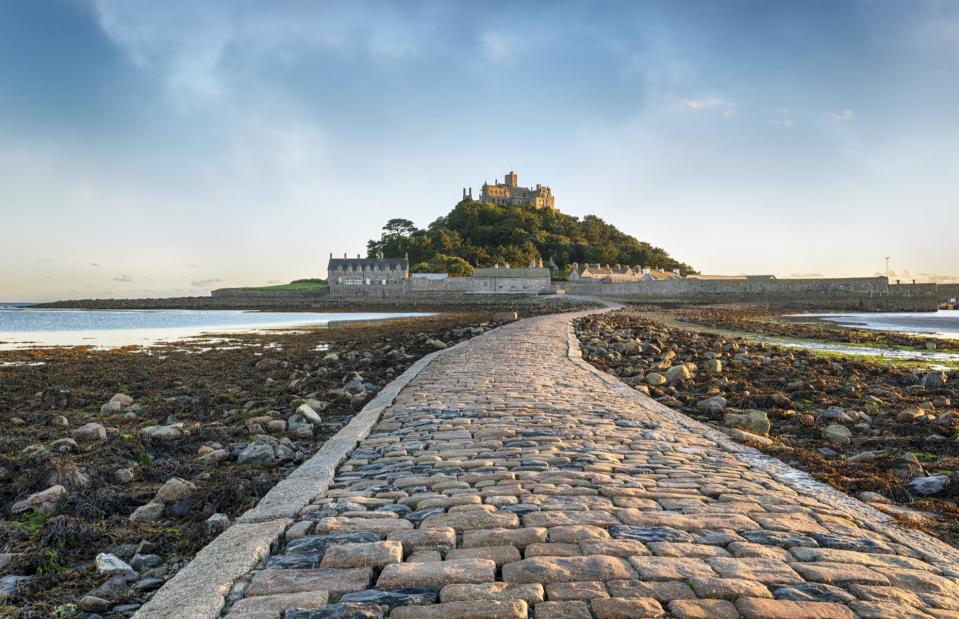
Helen Hotson/Shutterstock
Britain is bursting at the seams with beautiful buildings steeped in history, places of extraordinary natural beauty and striking ultra-modern structures. From ancient monuments to groundbreaking feats of engineering and Mother Nature’s best bits, visitors to England, Scotland and Wales are spoiled for choice.
Read on as we take a look at the most spectacular landmarks in Britain...
Stonehenge, Wiltshire, England
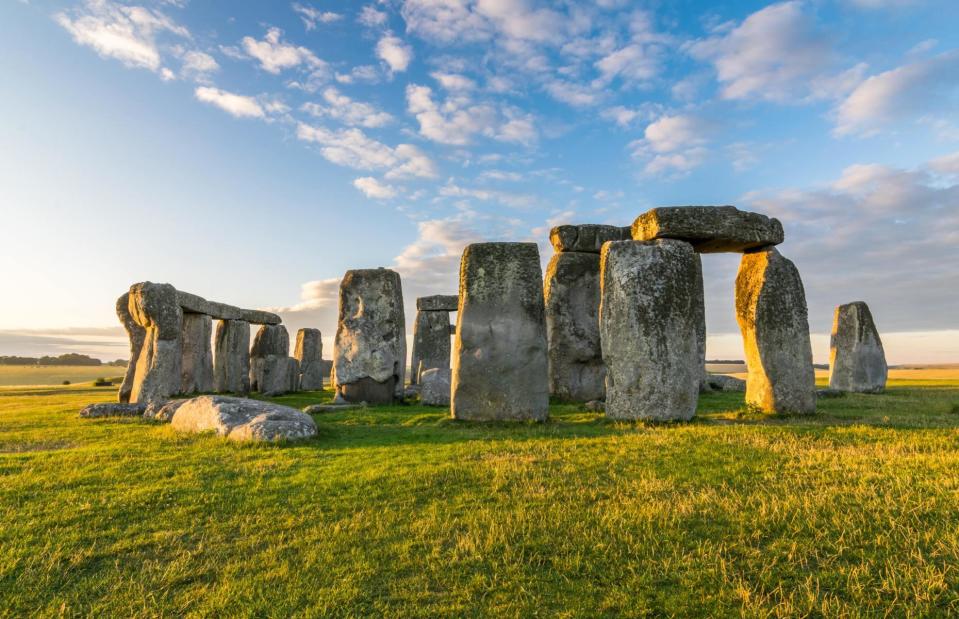
Donald Slack/Alamy Stock Photo
Rising from Wiltshire’s Salisbury Plain, this mighty circle of stones is one of England’s most recognised sights. The most famous prehistoric monument in Europe, it was erected in the late Neolithic period, around 2500 BC, and is now part of a UNESCO World Heritage Site along with nearby Avebury. The mystery of how and why the enormous sarsen stones and smaller bluestones were transported and erected here has fascinated people for centuries.
Tintern Abbey, Monmouthshire, Wales
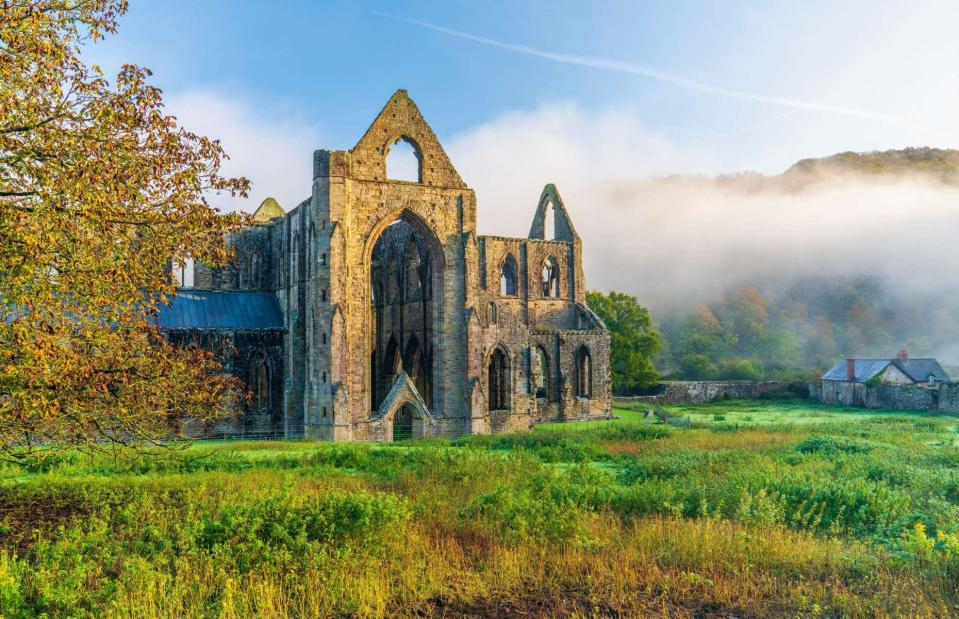
Sebastian Wasek/Alamy Stock Photo
The roofless ruins of this 13th century Cistercian Abbey on the Welsh bank of the River Wye perfectly captured the Romantic spirit of poets and painters when it became a famous landmark for the second time in the 18th century. Wordsworth wrote a poem, Lines Composed a Few Miles above Tintern Abbey, that beautifully evoked the "wild secluded scene" and Turner visited to sketch for later paintings. Today, one of the best viewpoints of the abbey is from the Devil's Pulpit Circular Walk.
Glenfinnan Viaduct, Inverness-shire, Scotland
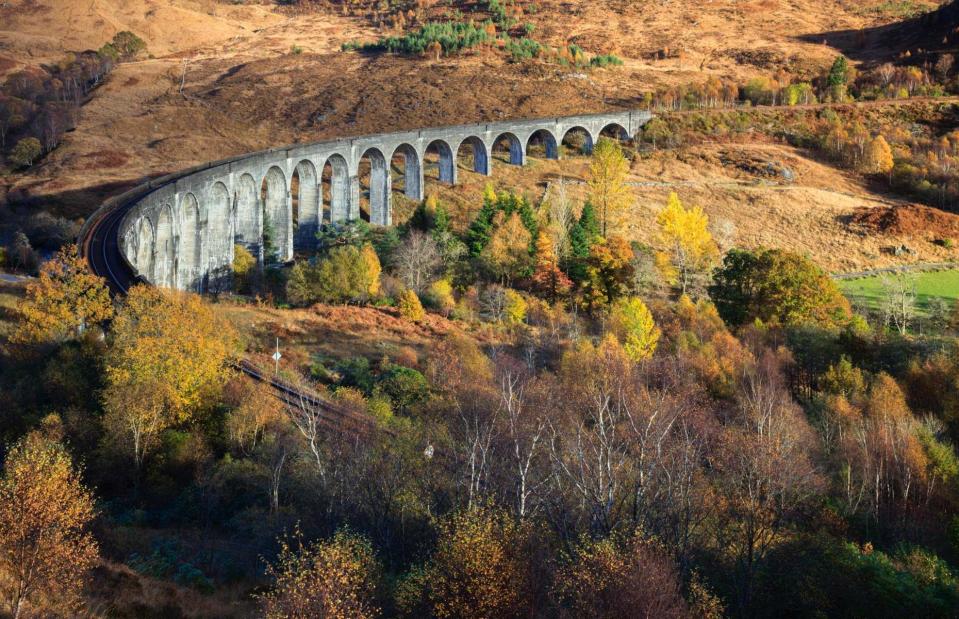
Andrew Ray/Alamy Stock Photo
This imposing Scottish viaduct is the country's longest concrete railway bridge – built in the 1890s, it was the first to be made of that material. The 21-arch viaduct offers beautiful Highland views for rail passengers on the West Highland Line from Fort William to Mallaig and famously featured in the Harry Potter films.
South Stack Lighthouse, Anglesey, Wales
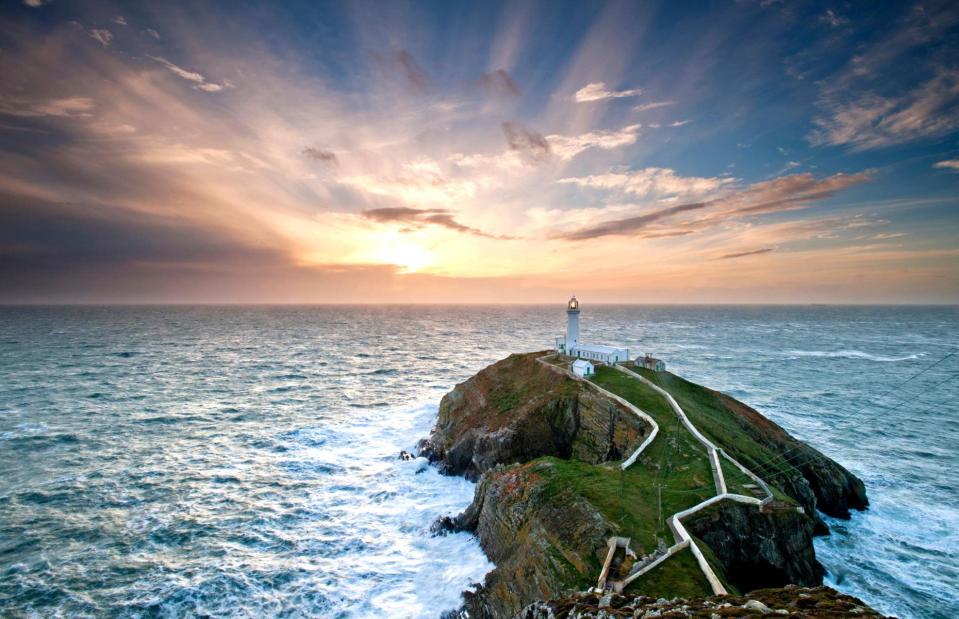
Alan Novelli/Alamy Stock Photo
This lonely lighthouse has marked the far northwestern edge of Anglesey's Holy Island since 1809. Today, the lighthouse can only be reached by walking down 400 steps and crossing a suspension bridge. South Stack is the home of guillemots, puffins and razorbills and the sea cliffs are a great vantage point for birdwatching.
Mull of Galloway, Dumfries and Galloway, Scotland
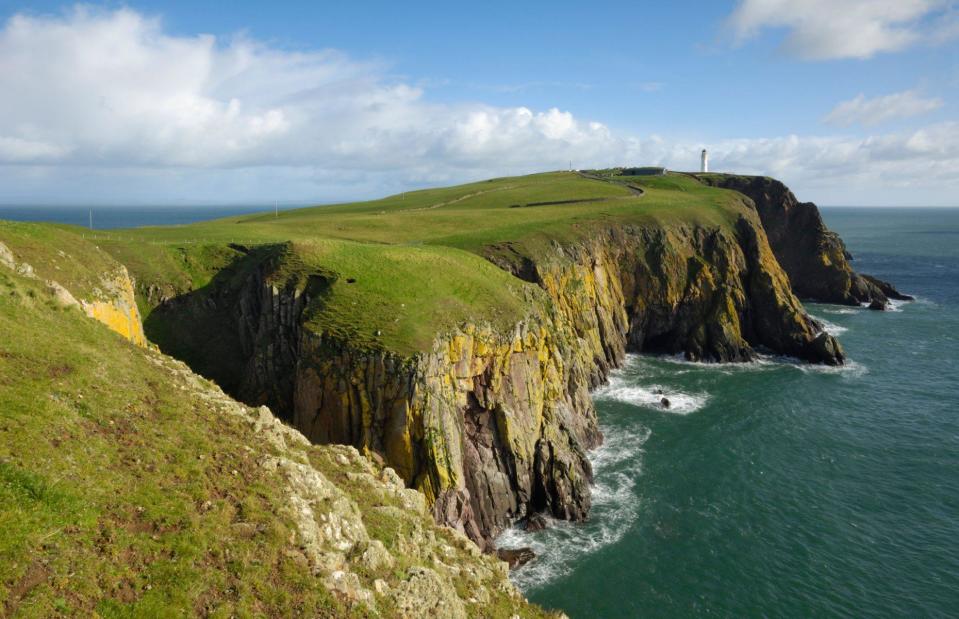
Gary Cook/Alamy Stock Photo
Scotland's most southerly point, the Mull of Galloway is a dramatic headland topped by a classic British lighthouse built by Robert Stevenson in the late 1820s. It's thought that at one time this land was the last stronghold of the Southern Picts, the warriors who repelled the conquest of the Romans.
St Davids Cathedral, Pembrokeshire, Wales
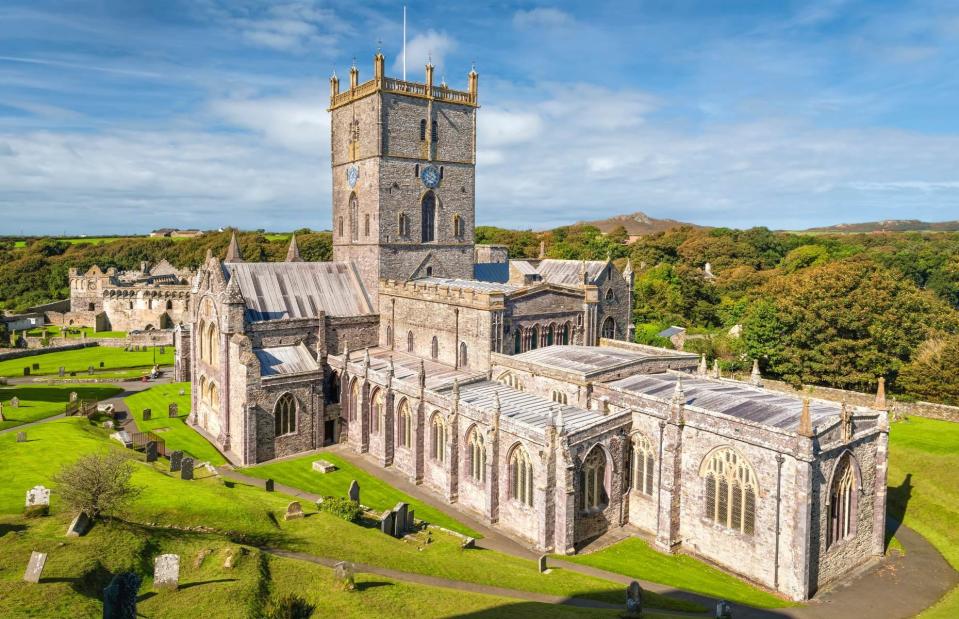
Valery Egorov/Shutterstock
Considered one of the most breathtaking places of worship in Wales, St Davids Cathedral can be found in its namesake city in Pembrokeshire. Built on the site where St David founded a monastery around AD 600, the present-day purple-stoned cathedral dates back to the 12th century. With its incredible chapels, medieval artwork and breathtaking architecture, the cathedral is a shining beacon of the tiny city.
White Cliffs of Dover, Kent, England
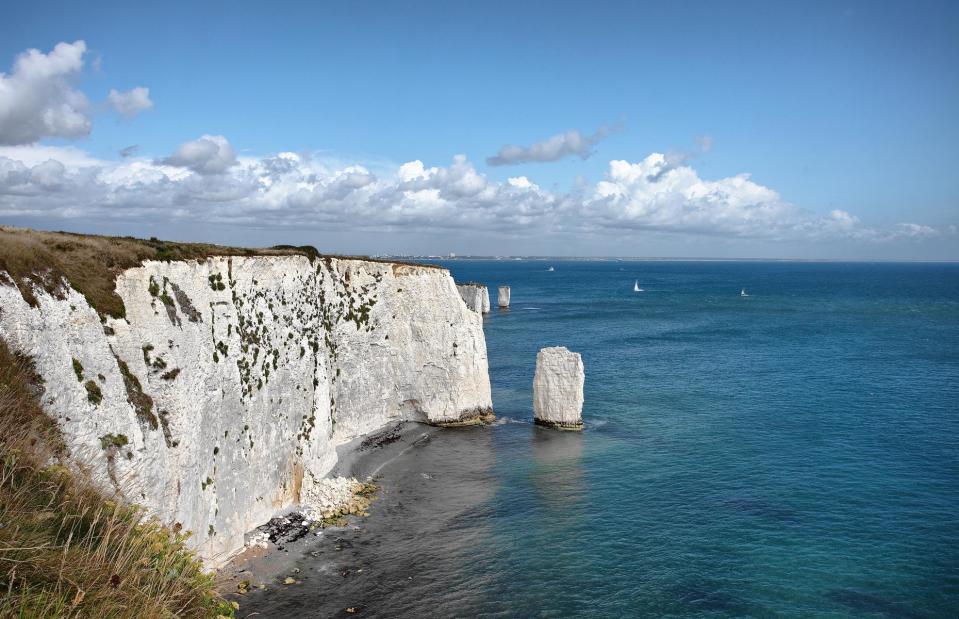
Viktor Kovalenko/Shutterstock
The startlingly white chalk cliffs on the Kent coast are one of Britain’s most distinctive natural features. Known as the gateway to Britain, they were the first sight of home for troops returning across the English Channel from the World Wars and have become a symbol of hope. Protected by the National Trust, there are plenty of historic sites along the gorgeous coastline including the Victorian South Foreland Lighthouse.
Edinburgh Castle, Edinburgh, Scotland
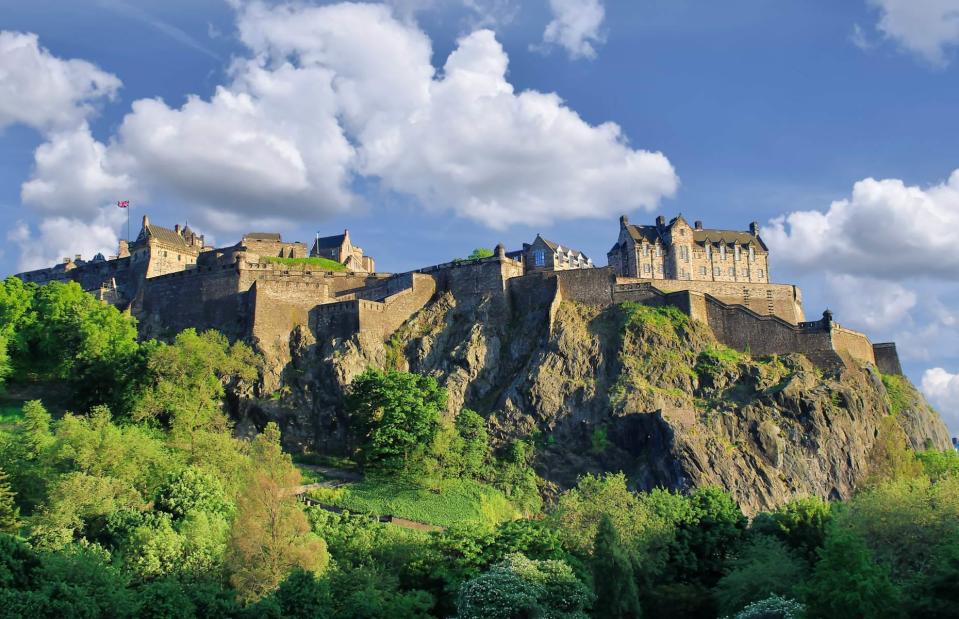
agsaz/Shutterstock
Standing high above the historic city of Edinburgh on the volcanic plug known as Castle Rock, this mighty fortress is one of Scotland’s most-visited attractions and rightly so. It was built during the 12th century by David I, son of Saint Margaret of Scotland, and was the main Scottish royal residence until the union of the crowns in 1603. The castle also usually hosts the famous Royal Edinburgh Military Tattoo each year.
Blackpool Tower, Blackpool, England
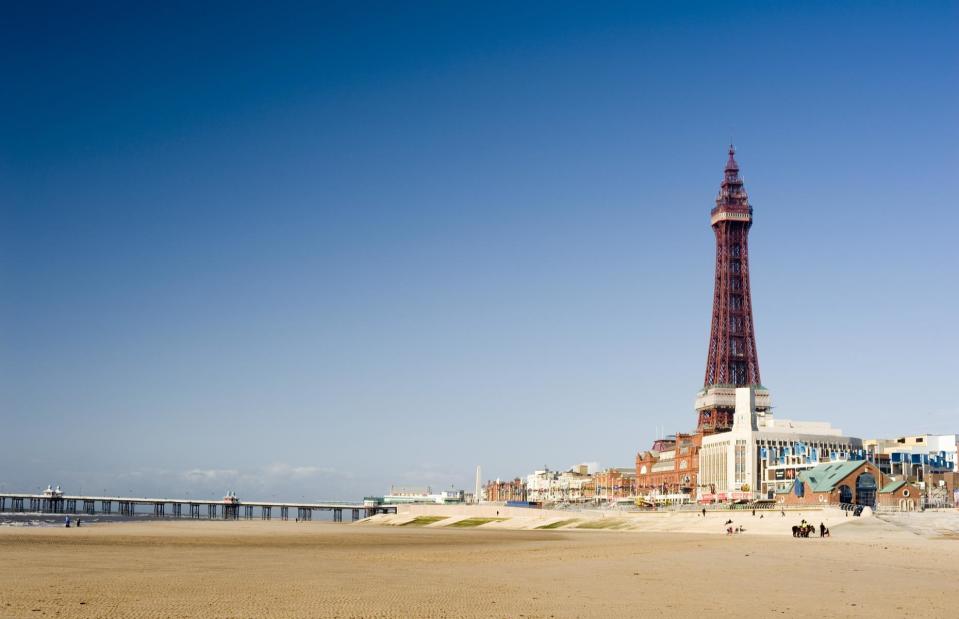
Stephen Gibson/Shutterstock
Overlooking Lancashire’s famous seafront since 1894, this 518-foot (158m) structure has become a much-loved icon of a glorious bygone era. It was designed by Victorian architect Frank Matcham, who was inspired by the Eiffel Tower. It's also home to the magnificent Blackpool Tower Ballroom, world-famous for its unique sprung dance floor and gorgeous architecture. With its prime spot on Blackpool’s coastline, the tower provides some of the most breathtaking views in the North West.
Pontcysyllte Aqueduct, Wrexham, Wales
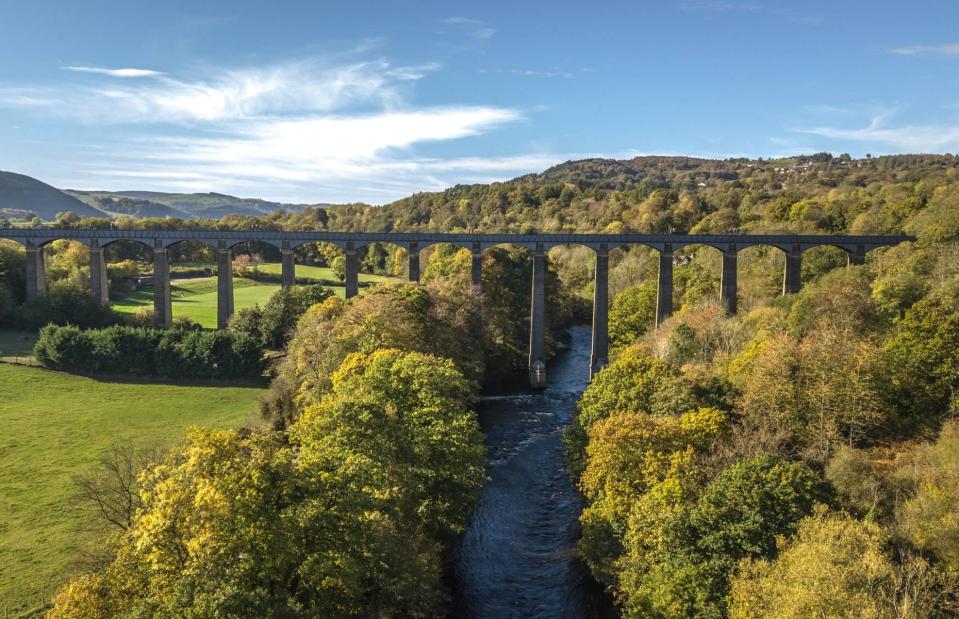
Daveleesuk/Shutterstock
Dubbed “the stream in the sky”, the impressive Pontcysyllte Aqueduct towers over the River Dee in Wales. Designed by engineers Thomas Telford and William Jessop in the late 18th century, it took a staggering 10 years to build and is considered a pioneering masterpiece of the Industrial Revolution. Today, the stone and iron arched bridge and 11 miles (17.7km) of picturesque canal are a UNESCO-listed attraction, mostly used by narrowboats but also by pedestrians as it's possible to cross on foot.
Brighton Palace Pier, Brighton, England
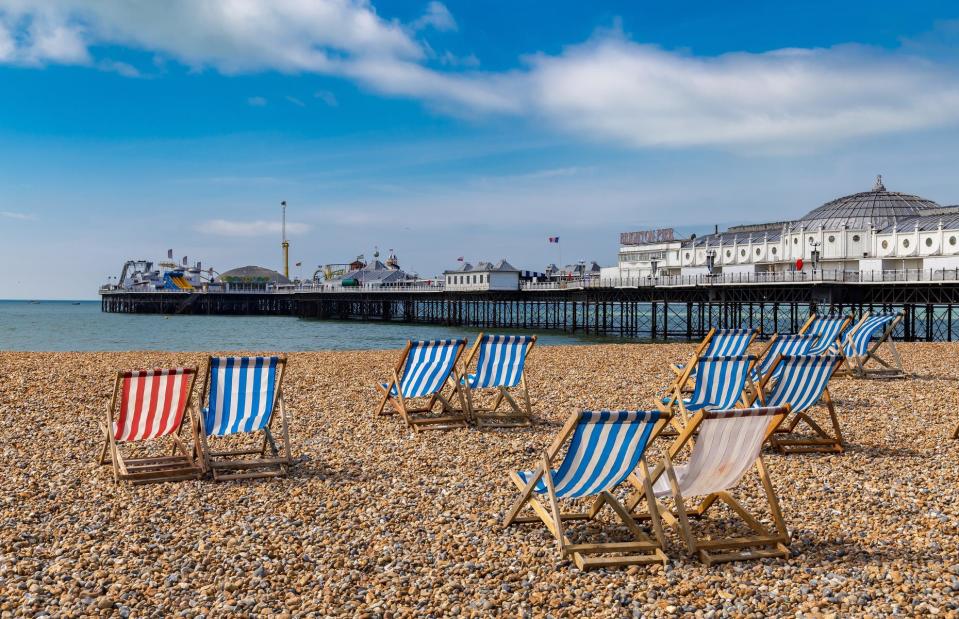
BerndBrueggemann/Shutterstock
A defining image of Britain’s traditional seaside resorts, Brighton’s 1,722-foot (525m) Victorian pier opened in 1899 and is one of the finest examples of a pleasure pier anywhere in the world. Highlights include stalls offering classic seaside food like fish and chips, an amusement arcade, and a mix of old-fashioned and modern fairground rides including the helter-skelter and the Turbo Coaster.
Henrhyd Falls, Powys, Wales
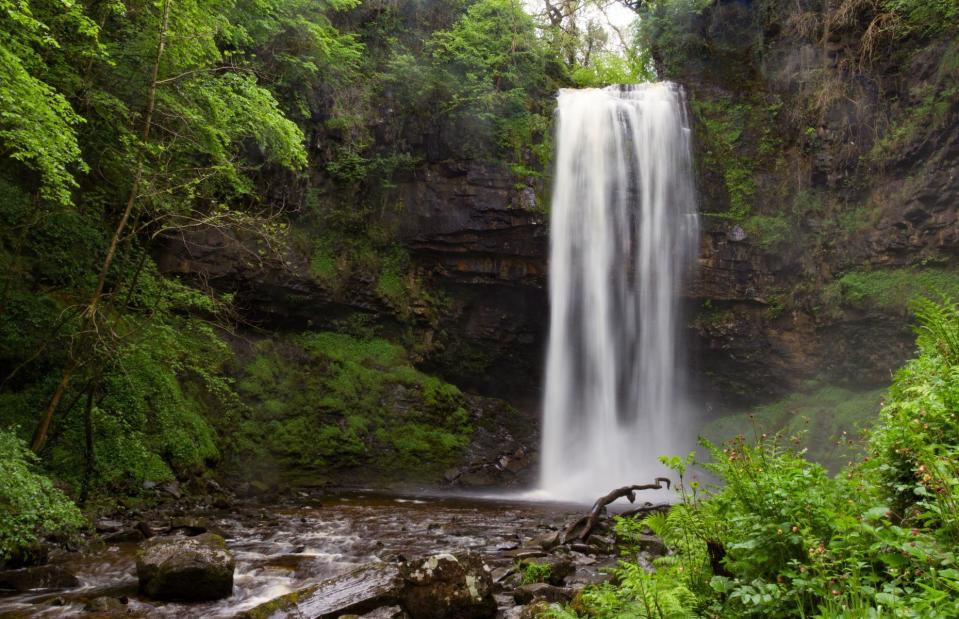
Ian_Sherriffs/Shutterstock
Nestled on the western border of Brecon Beacon National Park, plunging around 90 feet (27m), Henrhyd Falls is the highest waterfall in South Wales. Cascading into a wooded gorge and bordered by pretty woodland, the falls are one of the park’s most picturesque attractions. Known for its secluded setting, Henrhyd Falls has doubled as the famous Bat Cave in Christopher Nolan’s film The Dark Knight Rises.
Fingal’s Cave, Isle of Staffa, Scotland
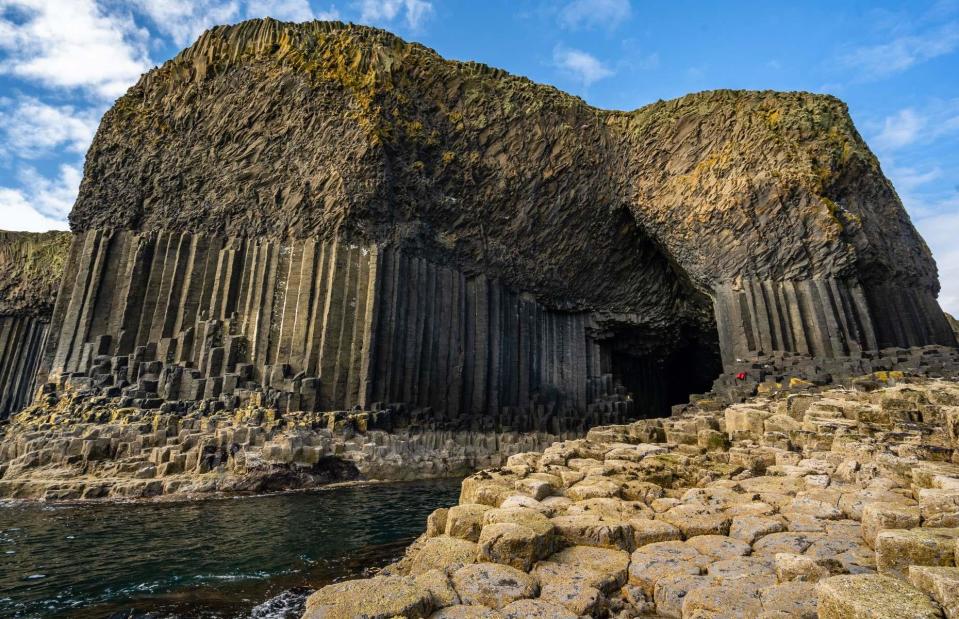
harryjroth/Shutterstock
Situated just off the coast of the Scottish island of Staffa, Fingal’s Cave is a memorable sight. Dating back millions of years, the geological wonder was formed by the same lava flow that created Northern Ireland’s famous Giant’s Causeway just across the water. The cave’s incredible hexagonal basalt columns are so symmetrical that many believe that they are man-made. Stretching 227 feet (69m) above the ocean, Fingal’s Cave is one of Scotland’s most impressive natural attractions.
Glastonbury Tor, Somerset, England
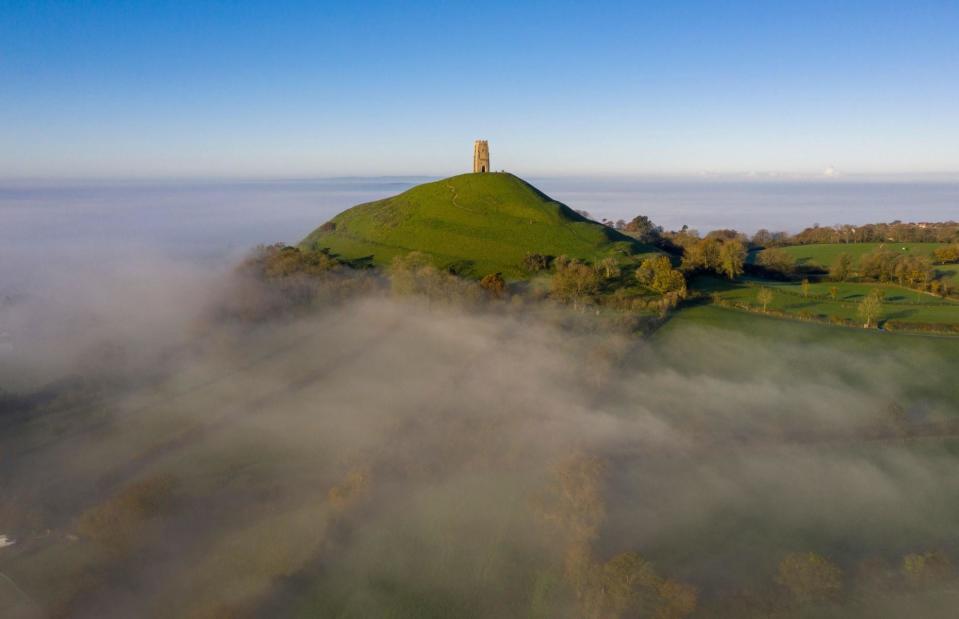
Lloyd/Alamy Stock Photo
Steeped in pagan history and immortalised in poetry and legend, the conical hill of Glastonbury Tor has been one of Britain’s most spiritual sites for over 1,000 years. Crowning the hill is the magnificent ruin of the roofless 14th-century St Michael’s Tower, which offers wonderful views across the Somerset countryside.
The Needles, Isle of Wight, England
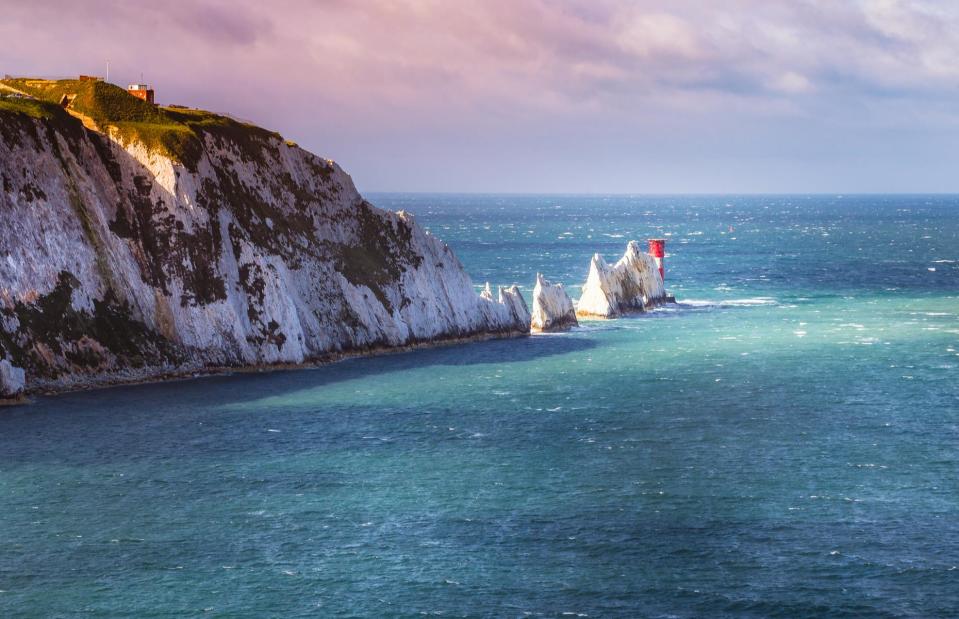
Christine Bird/Shutterstock
The three distinct chalk stacks that rise out of the sea at the furthest western point of the Isle of Wight are the diamond isle’s most famous landmark. Surrounded by gorgeous coastal habitat and within a designated Area of Outstanding Natural Beauty, the rock formation overlooks a picturesque beach bordered by the grass-topped sand cliffs of Alum Bay. Its famous red and white-striped lighthouse sits at the end of the furthest stack and marks the western entrance to the Solent.
Tower Bridge, London, England
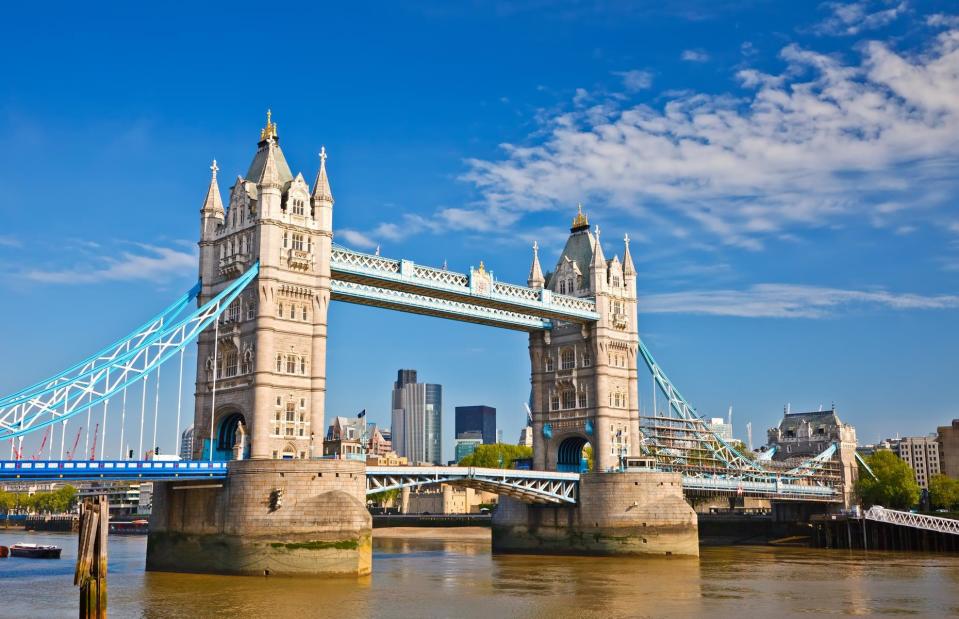
S.Borisov/Shutterstock
The fairy-tale turrets on this bridge, which stretches from the Tower of London to Shad Thames on the South Bank, have made it one of London’s most recognisable structures. Built in the late 1800s, it's open to both cars and pedestrians. Within the Victorian engine rooms, there’s a museum exploring the history of the bridge and the glass floor of the high-level walkway at the top offers a spine-tingling bird’s-eye view of the city below.
Avebury, Wiltshire, England
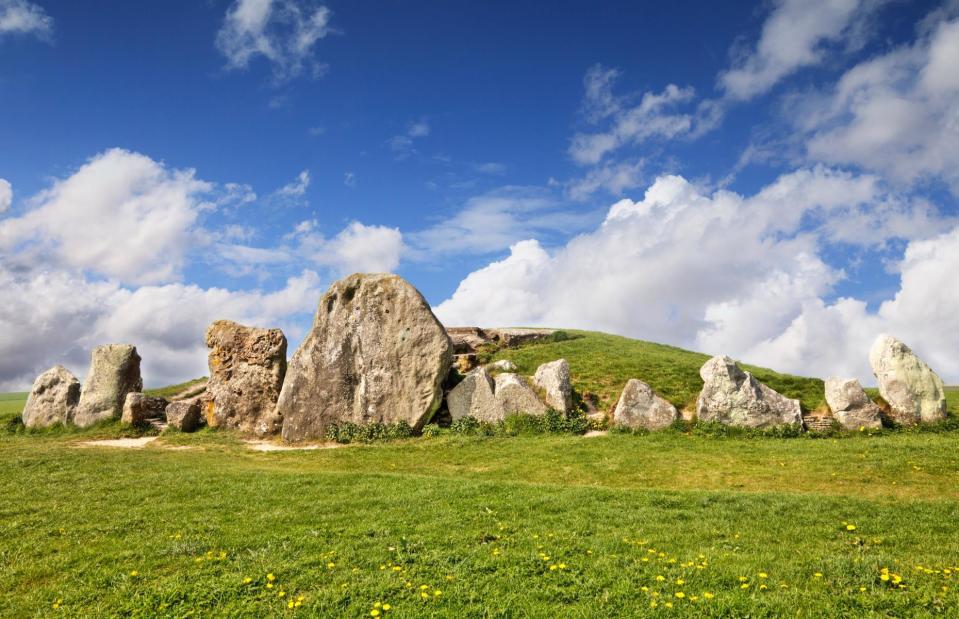
travellight/Shutterstock
Another of the UK’s amazing prehistoric sites, Avebury near Stonehenge is a vast Neolithic complex that includes the largest stone circle in Britain, originally made of about 100 stones. The ceremonial site was built and altered over six centuries from around 2850 BC, and includes banks, ditches and three stone circles.
Forth Bridge, Edinburgh and Fife, Scotland
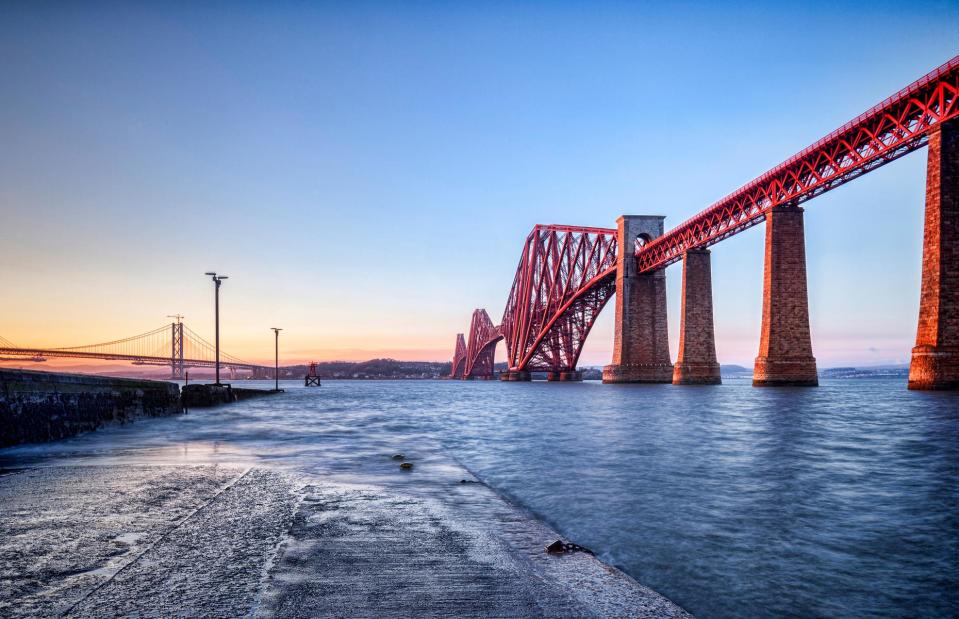
travellight/Shutterstock
One of three magnificent bridges that cross the Firth of Forth, this russet-hued cantilever railway crossing is one of Scotland’s most beloved landmarks. It was built by Sir John Fowler, Benjamin Baker and over 4,500 men to link Queensferry and North Queensferry in the late 19th century. The immense steel structure became a UNESCO World Heritage Site in 2015, which recognised it as an "extraordinary and impressive milestone in bridge design and construction".
Tower of London, London, England
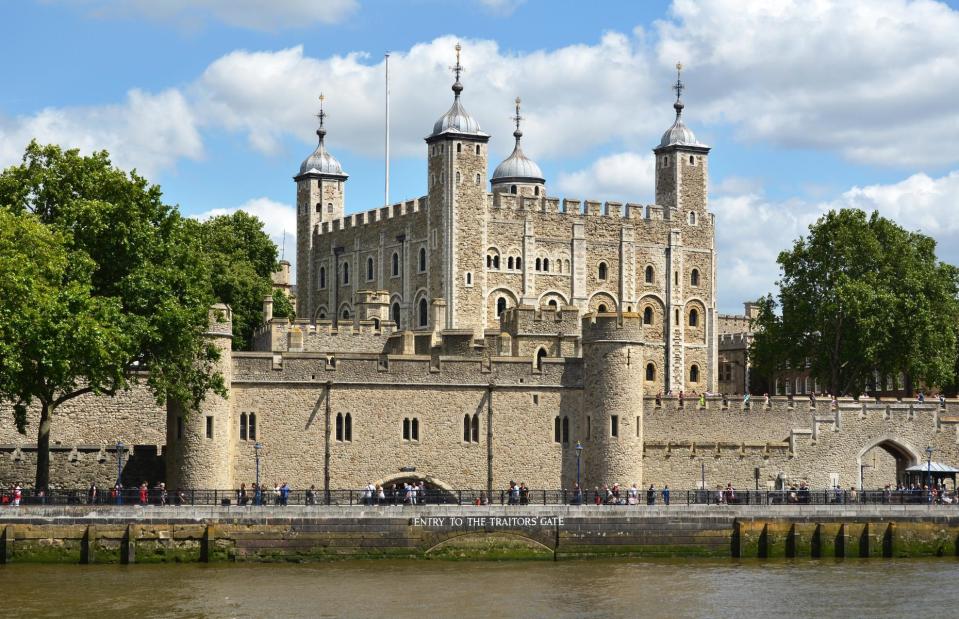
Alexander Chaikin/Shutterstock
If walls could talk, this ancient stronghold would have the most incredible stories to tell. Steeped in tales of death, torture and bloodthirsty intent, the Tower of London is where two princes disappeared under the reign of Richard III and Anne Boleyn was imprisoned and executed. Highlights from the foreboding fortress include the Bloody Tower, Traitor’s Gate where Tudor prisoners were brought by barge and the mesmerising Crown Jewels.
Hadrian’s Wall, Cumbria, Northumberland, and Tyne and Wear, England
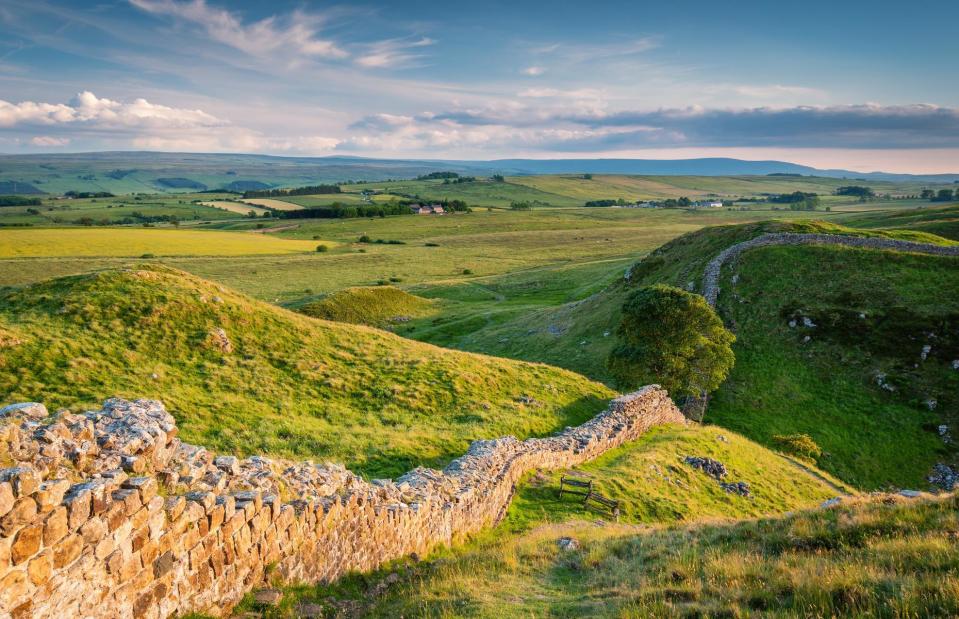
Dave Head/Shutterstock
Erected in AD 122 to guard the northern frontier of the Roman Empire under the orders of Emperor Hadrian, this mighty stone wall stretched 73 miles (129km) from coast-to-coast in the north of England. It took at least six years to complete. Now a UNESCO-listed site, it’s the country’s most spectacular and important Roman monument. It’s not just a wall though – various forts, milecastles, barracks and ramparts with museums can be found along it.
Eden Project, Cornwall, England
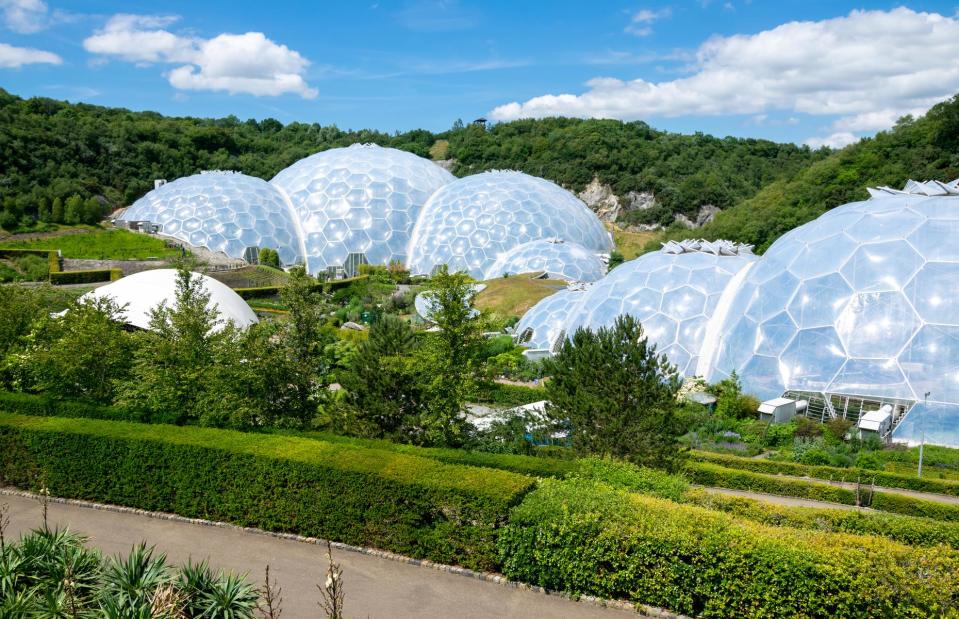
Nicole Kwiatkowski/Shutterstock
A vast tropical garden built in an old Cornish clay pit, the Eden Project’s striking geodesic domes have become a world-famous attraction in south Cornwall. Conceived and designed by Sir Tim Smit, the groundbreaking complex first opened in 2001. The biomes are filled with thousands of different species of plants and trees – its enormous Rainforest Biome is twice as tall as the Tower of London and is the largest indoor rainforest in the world.
Buckingham Palace, London, England
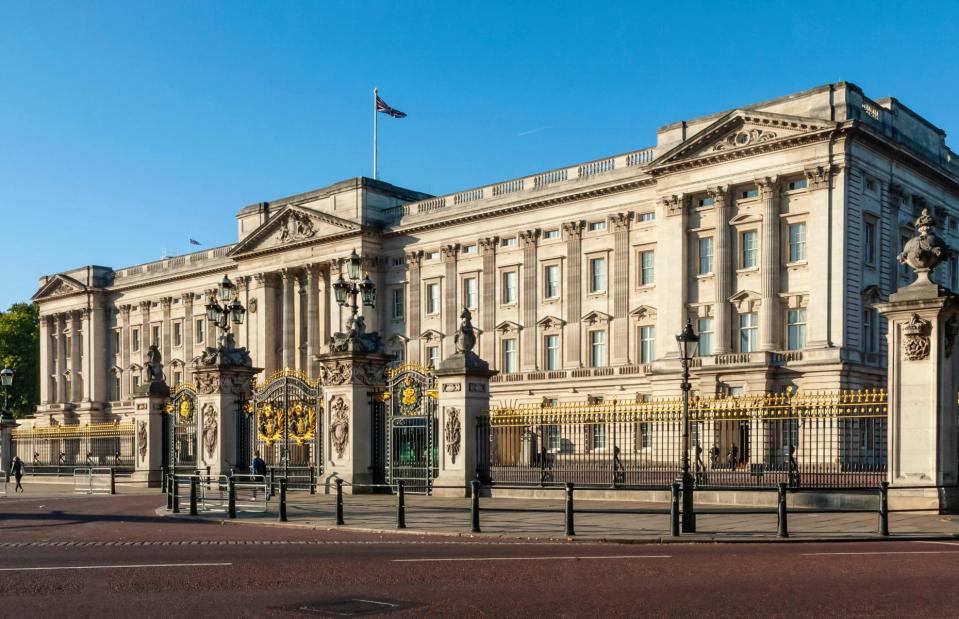
robertharding/Alamy Stock Photo
From watching the changing of the guard to catching a glimpse of the royals on the balcony at state occasions, the King’s official HQ is usually a top tourist spot. But its status as the official royal residence is relatively recent. Originally built as a townhouse for the Duke of Buckingham in the 18th century, it was first acquired by royalty in 1761 when George III bought it for his wife Queen Charlotte. The architect John Nash transformed it into a grand palace, but George died before he could move in and Queen Victoria became the first monarch to live in it. As well as Buckingham Palace, King Charles II has two more official residences: Windsor Castle and the Palace of Holyroodhouse in Edinburgh.
Cerne Abbas Giant, Dorset, England
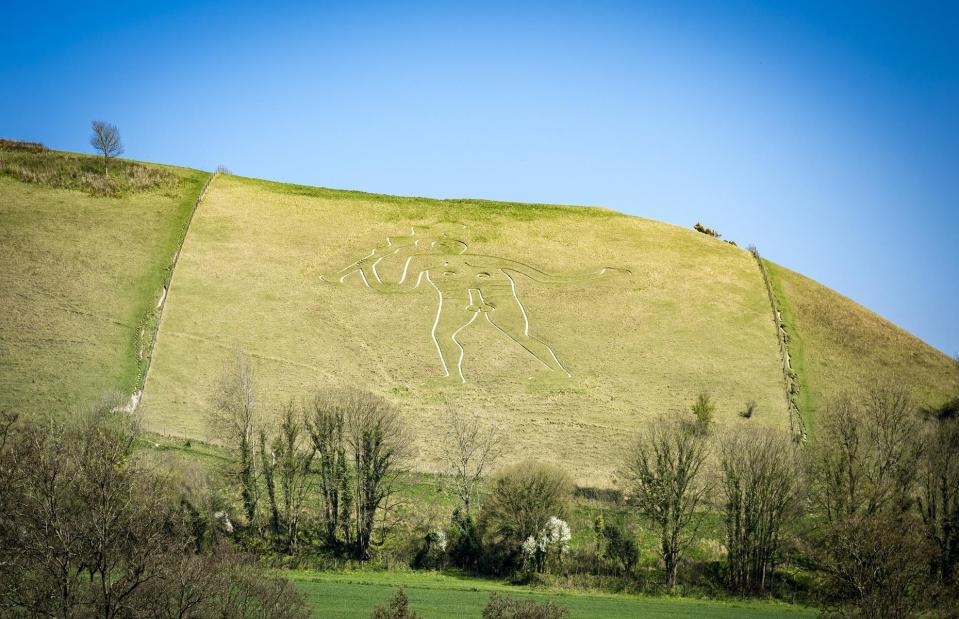
allou/Shutterstock
Carved into the chalky hillside above the village of Cerne Abbas in Dorset, this ancient outline of a naked giant has attracted curious travellers for centuries. No one quite knows when or why the 180-foot (55m) tall figure was carved here, although folklore has it that it was an ancient symbol of fertility. Nevertheless, Britain's largest chalk hill figure is a spectacular sight.
Ben Nevis, Scottish Highlands, Scotland
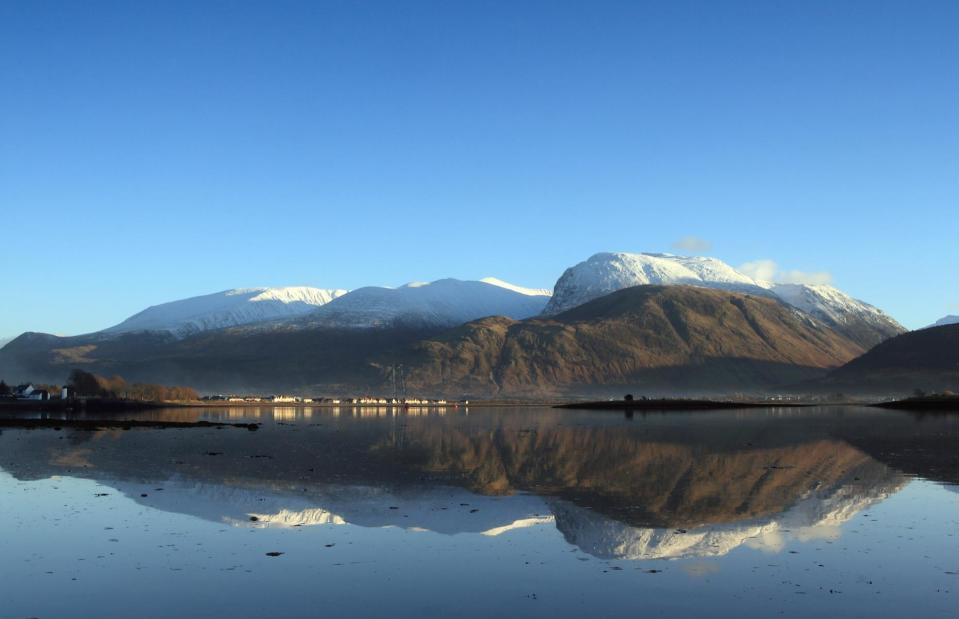
John A Cameron/Shutterstock
The loftiest peak in all of the British Isles, towering a staggering 4,411 feet (1,345m), is the best-known of all of Scotland’s majestic Munros, which are mountains over 3,000 feet (914m) high. Once an active volcano that exploded and collapsed into itself millions of years ago, Ben Nevis is set in the northwest Highlands, near the town of Fort William. The landscape here is incredibly dramatic with numerous walking trails up or around the hulking mountain that lead past picturesque lochs and glacial valleys.
Spinnaker Tower, Portsmouth, England
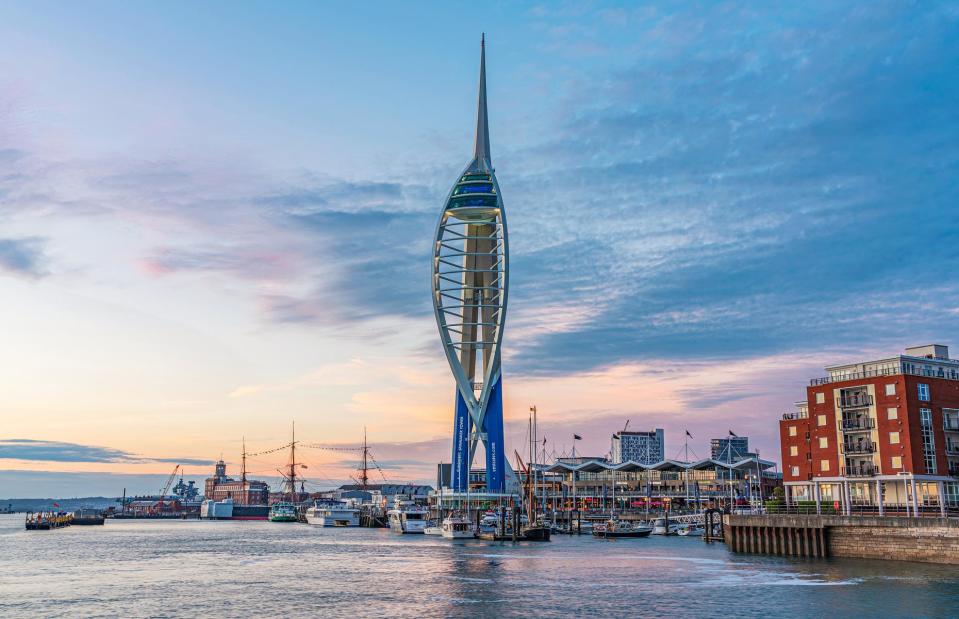
asiastock/Shutterstock
Visible from 23 miles (37km) away, this 560-foot (171m) tower on Portsmouth’s historic harbour was designed to celebrate the new millennium. Various delays meant it didn’t open until 2005 but the striking structure has been a hugely popular landmark attraction ever since. With its views of the Solent and beyond from its vertiginous Sky Deck, it is one of Britain’s best viewing towers.
Caernarfon Castle, Gwynedd, Wales
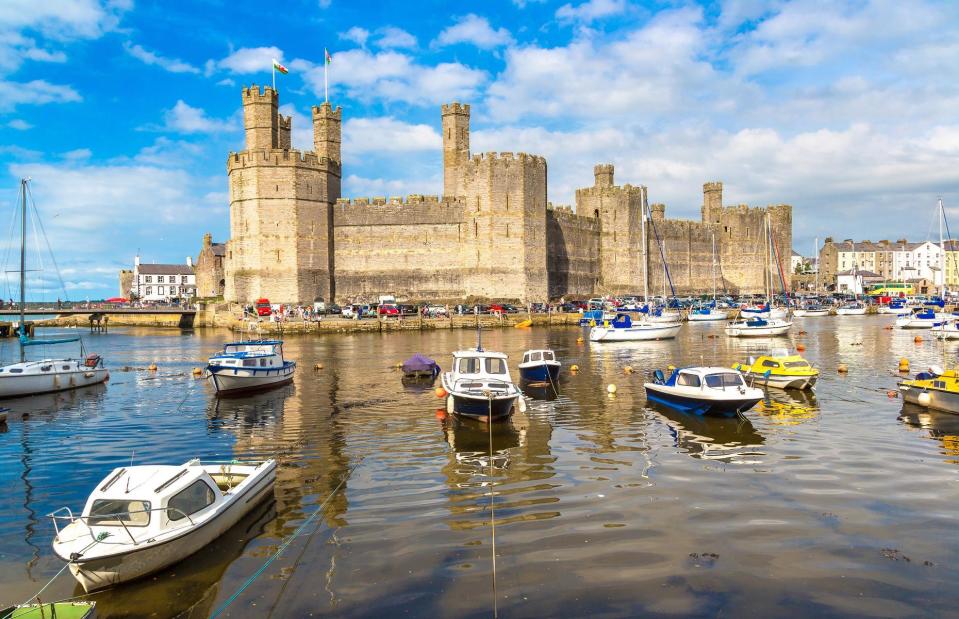
S-F/Shutterstock
Gwynedd’s UNESCO World Heritage Caernarfon Castle is often cited as one of Wales’s most impressive. Built under the orders of Edward I in the 1200s, the mighty medieval fortress perches at the end of the Menai Strait and is particularly renowned for its hefty walls and unusual polygonal towers.
Windsor Castle, Windsor, England
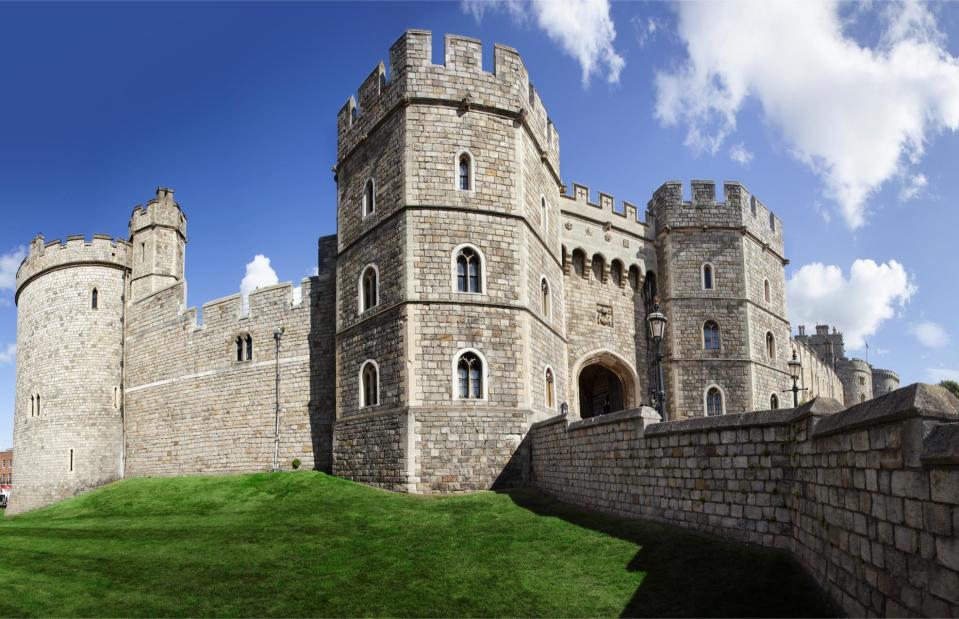
Daniela Migliorisi/Shutterstock
Originally built by William the Conqueror in the 1070s, high above the River Thames and on the edge of a Saxon hunting ground, the royal weekend residence is the world’s oldest and largest occupied castle. Inside, the State Apartments with their gold-trimmed walls and spectacular artwork are some of the most lavish rooms in the castle. Its famous St George's Chapel has hosted 17 royal weddings, including most recently that of Prince Harry and Meghan Markle, as well as Princess Eugenie and Jack Brooksbank, both in 2018.
St Paul's Cathedral, London, England
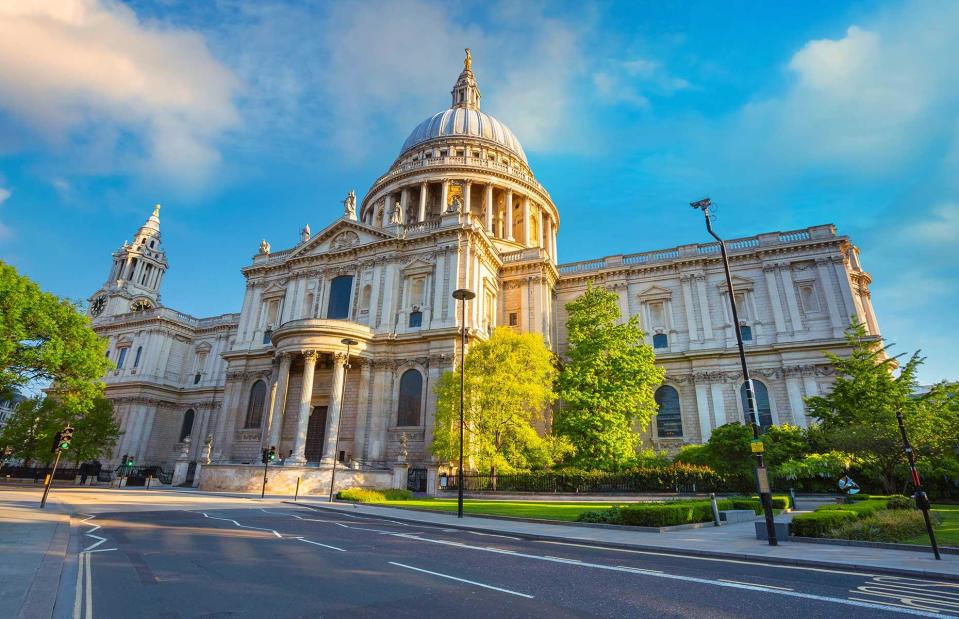
cowardlion/Shutterstock
A beacon of London’s enduring spirit, famously standing strong during the Blitz, Sir Christopher Wren’s domed structure replaced the original Gothic cathedral that was destroyed in the Great Fire of London in 1666. Inside, 259 steps take visitors to the Whispering Gallery within the dome’s interior while the Golden Gallery on the outside offers sensational city views. Deep inside the cathedral’s crypt is the resting place of Wren himself.
Iron Bridge, Shropshire, England
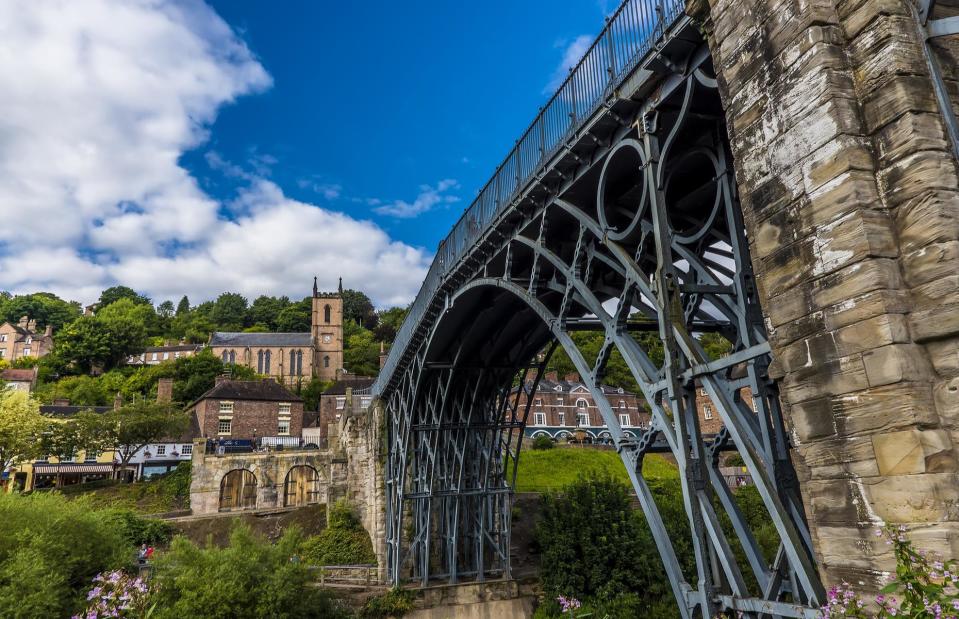
Nicola Pulham/Shutterstock
Stretching across the River Severn in Shropshire, this was the first iron bridge in the world, and the town that grew around it (Ironbridge) was named for it. The 100-foot (30m) structure was built by Abraham Darby III, based on a design by local architect Thomas Farnolls Pritchard. It opened in 1781 but was closed for crossing in 1934 until the restoration of the bridge was completed in 2019.
Radcliffe Camera, Oxford, England
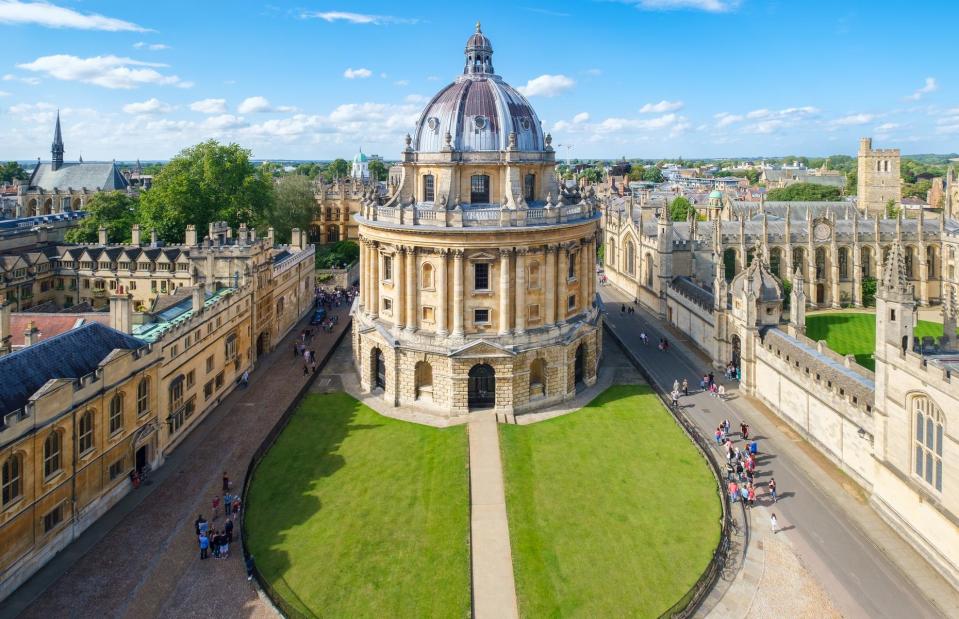
Kamira/Shutterstock
In a city stuffed with historic buildings, the striking circular dome of Oxford’s Radcliffe Camera is arguably the most distinctive. It was designed by the architect James Gibbs between 1737 and 1749 to house a new scientific library. The Latin word ‘camera’ means ‘chamber’, and it was named after the royal physician Dr John Radcliffe, who bequeathed funds to Oxford University. Today, it's the main reading room of the Bodleian Library.
Coventry Cathedral, Coventry, England
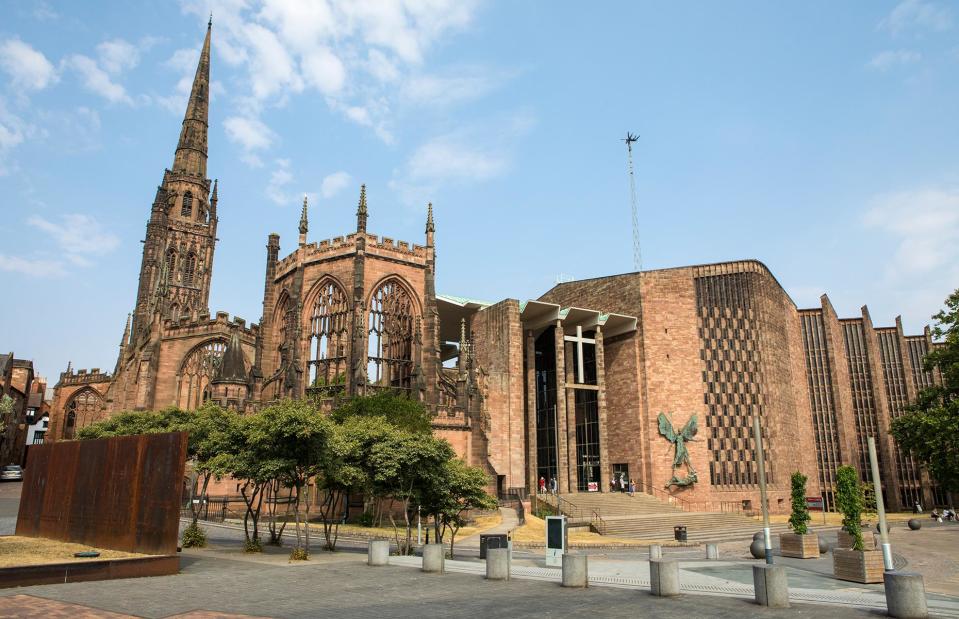
chrisdorney/Shutterstock
A potent symbol of reconciliation in post-war Britain, Coventry’s cathedral is a striking modernist structure, rising adjacent to the ruined shell of the old one that was destroyed during the Coventry Blitz. The city suffered huge losses on 14 November 1940, when 1,200 people were killed and hundreds of its medieval buildings destroyed in a bombing raid. The words “Father Forgive” are etched above the altar of the ruined medieval church, which remains hallowed ground.
Warwick Castle, Warwickshire, England
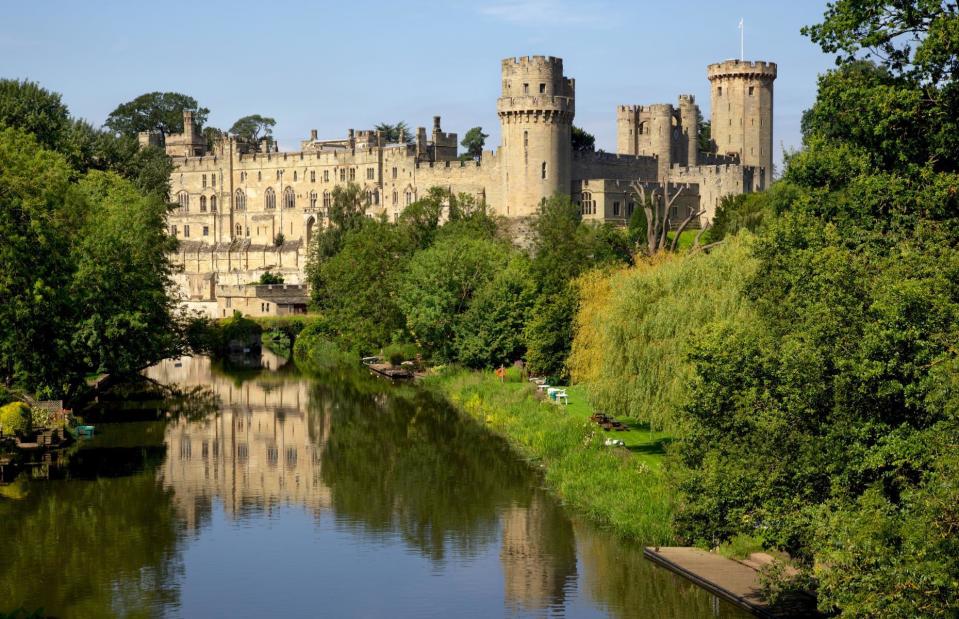
David Steele/Shutterstock
Once the site of a Saxon fortification built to defend against invading Danes and later, in 1068, a motte and bailey castle built by William the Conqueror, Warwick Castle has evolved to become one of Britain’s finest and most complete medieval fortresses. An imposing sight on the banks of the River Avon, the castle is now a popular tourist attraction and usually hosts a range of fun medieval-themed activities and accommodation.
Palace of Westminster, London, England
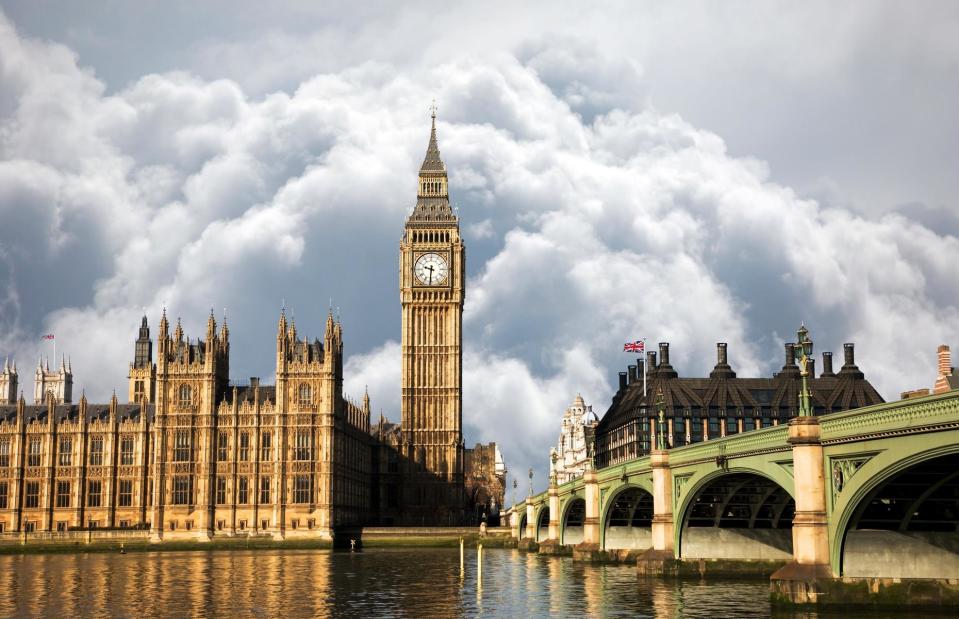
Bikeworldtravel/Shutterstock
The political epicentre of Britain has sat at this location in some form since the 11th century when Danish king Canute the Great built a palace on the river. In its 900-year history, it has been the site of infamous trials (William Wallace and Sir Thomas More), survived the notorious Gunpowder Plot and been the focus of pivotal political rallies such as those by the suffragettes. The current Palace of Westminster was designed by architect Sir Charles Barry after a huge fire destroyed the previous building in 1834.
Selfridges building, Birmingham, England

robertharding/Alamy Stock Photo
This huge bubble-like building was constructed in Birmingham between 1999 and 2003. It is part of the Bullring shopping centre that's widely considered to have kickstarted the city's regeneration. The iconic Selfridges building, whose design was inspired by a 1960s Paco Rabanne chainmail dress, underwent an upgrade in time for the Commonwealth Games in 2022. Today, it continues to draw in crowds for its unique architecture as well as its wares.
Loch Ness, Scottish Highlands, Scotland
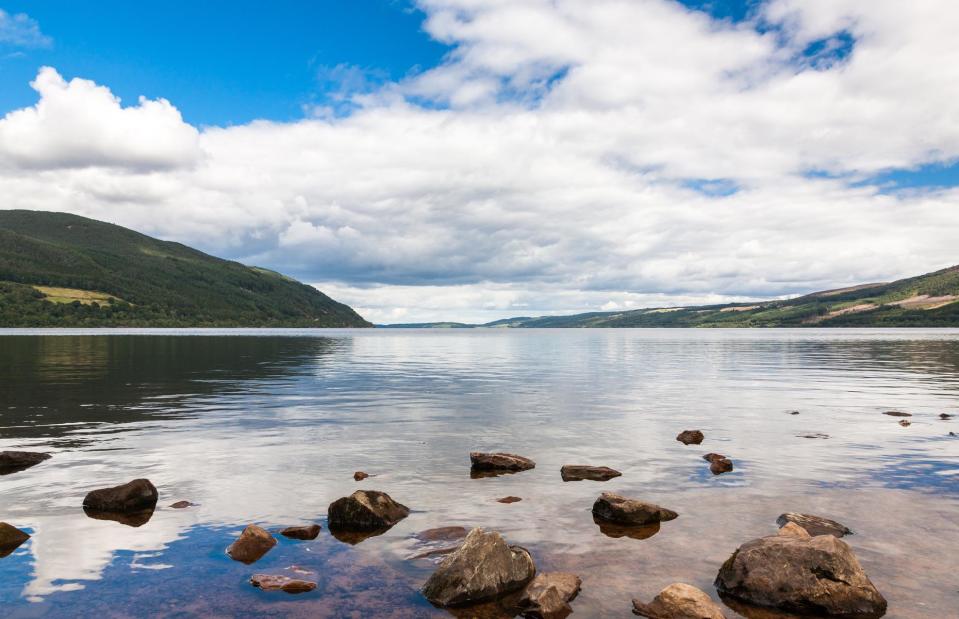
Bucchi Francesco/Shutterstock
The legend of the Loch Ness monster has lured tourists from around the world to this scenic loch for decades. Holding more water than all the lakes of England and Wales combined, it is Scotland’s second-largest and deepest loch at around 700 feet (213m). Hailed for its incredible landscape and dramatic scenery, it is without doubt the most famous and arguably the most breathtaking of Scotland’s lochs.
Lincoln Cathedral, Lincoln, England
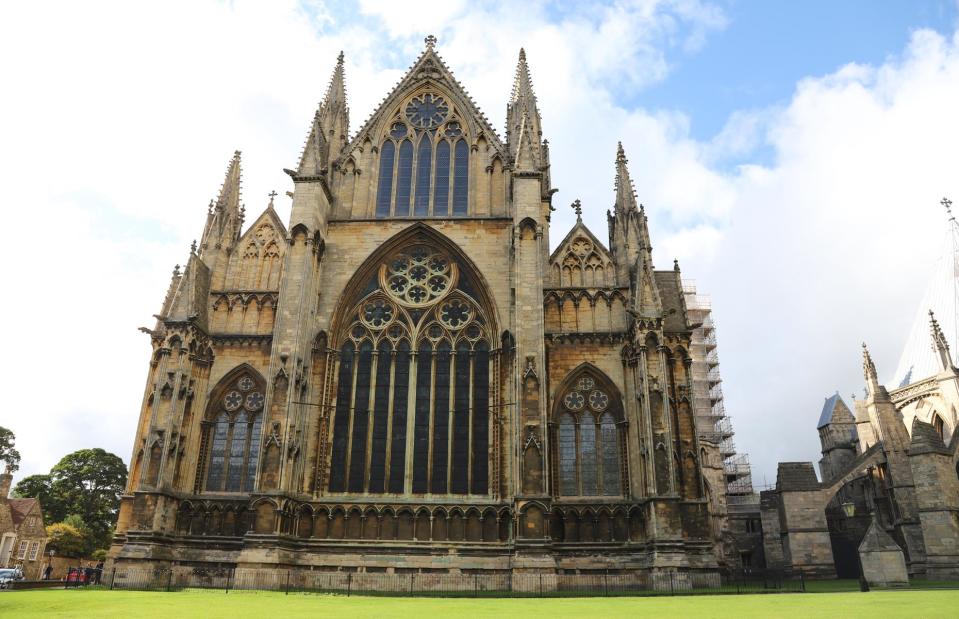
Joyce Nelson/Shutterstock
One of Britain’s greatest architectural treasures and one of the world’s tallest Gothic structures, Lincoln’s lofty cathedral is an impressive sight. Yet another legacy of William the Conqueror, it was consecrated in 1092. The later addition of a central spire in 1311 made it the tallest building in the world until 1548, when the spire collapsed.
Angel of the North, Gateshead, England
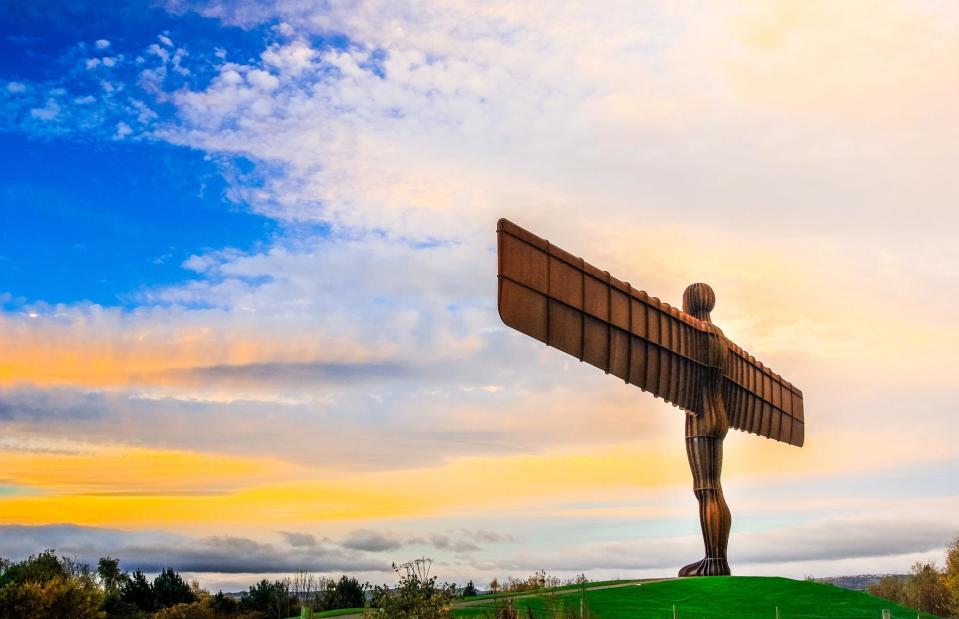
varunya/Shutterstock
Antony Gormley’s colossal steel sculpture is a modern masterpiece. Looming over the A1 road on the mound of an abandoned coal mine in Gateshead since 1998, the extraordinary and once controversial piece of public art has become a cherished landmark in England’s northeast. Its wingspan is nearly as wide as a Boeing 747 at 177-feet (54m) across and it stands 66-feet (20m) tall.
Hampton Court Palace, Greater London, England
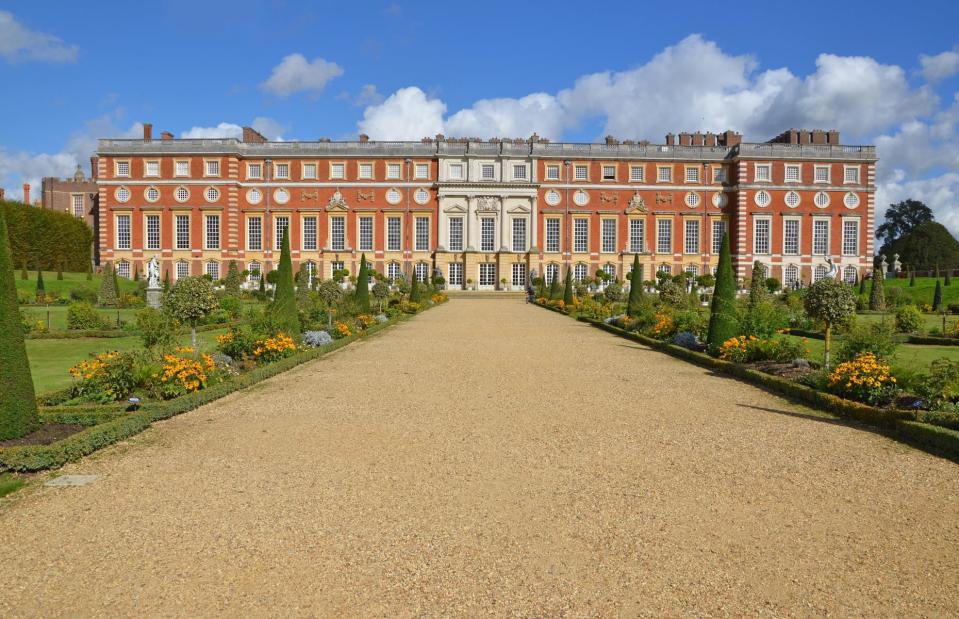
Deatonphoto/Shutterstock
The pleasure palace of the infamously extravagant Henry VIII sits on the banks of the Thames in west London. Originally the home of Cardinal Wolsey, by 1540 Henry had transformed it into a lavish Tudor palace. In the heart of the palace lies the magnificent Great Hall, with its towering hammerbeam roof and fine tapestries decorating the walls. Alongside the Great Hall, there are the impressive Great Kitchens which once served up to 1,600 meals a day, plus the palace’s gorgeous gardens.
Humber Bridge, Lincolnshire and Yorkshire, England

Karl Everett/Shutterstock
Stretching across the Humber estuary, this impressive bridge gained Grade I-listed status in 2018, 36 years after it opened. The 1.4-mile long (2.2km) structure, that links Lincolnshire and Yorkshire on the A15, opened in 1981 and was the longest single-span suspension bridge in the world for 16 years.
Royal Albert Dock, Liverpool, England
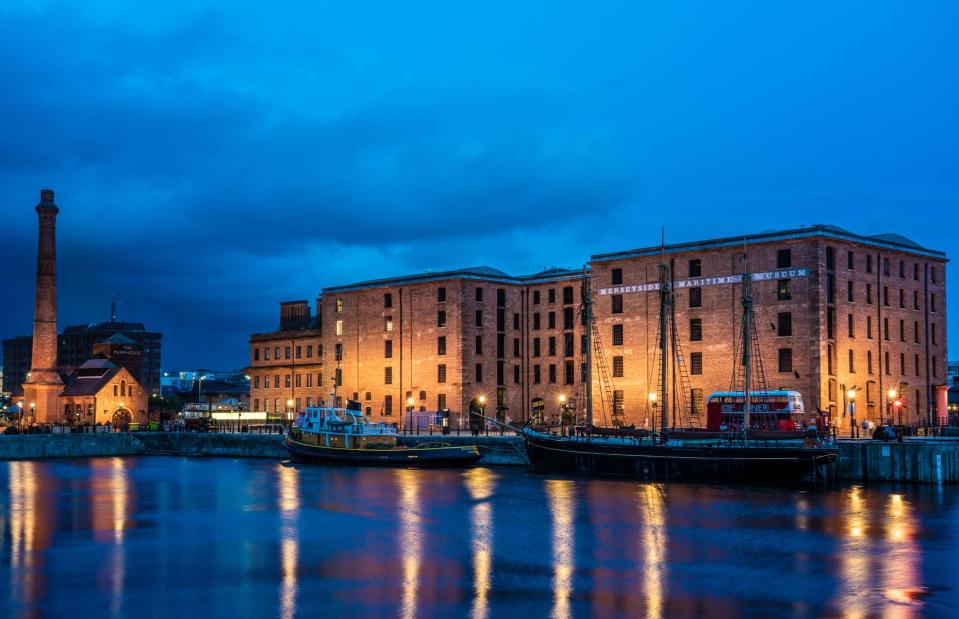
asiastock/Shutterstock
Part of Liverpool's historic waterfront, the Royal Albert Dock features the largest collection of Grade I-listed buildings in the whole of the UK. Opened in 1846, the prosperous port became one of the world’s most important trading centres and was one of Europe’s biggest hubs for the transatlantic slave trade during the 18th century. Today, a museum exploring the city’s role in the slave trade can be found on the docks. A huge regeneration programme in the 1980s transformed the derelict warehouses into one of the country’s liveliest cultural hubs and it is now a UNESCO World Heritage Site.
Snowdon, Gwynedd, Wales
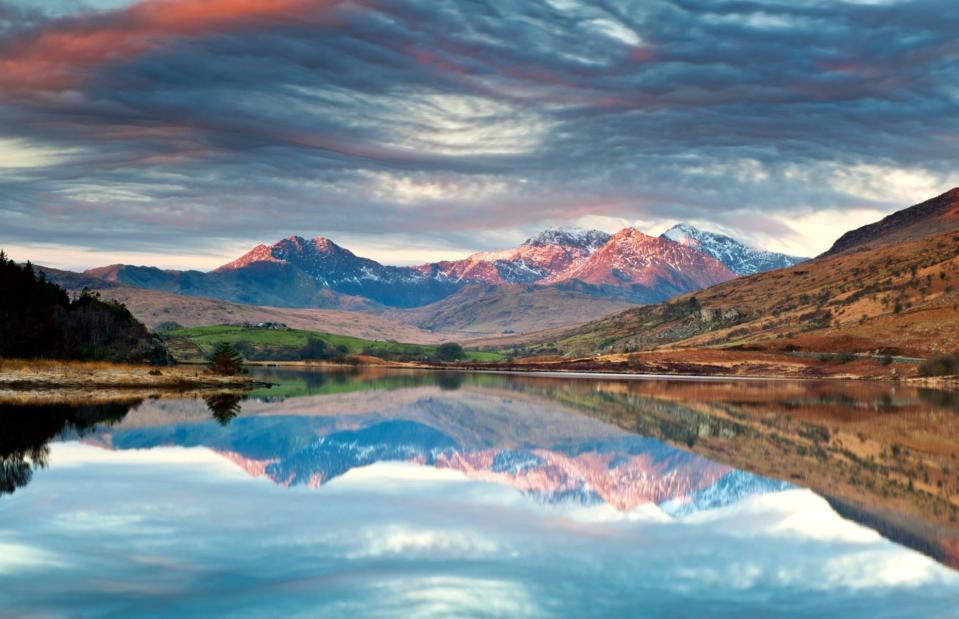
Alan Novelli/Alamy Stock Photo
The towering mass of Snowdon, or Yr Wyddfa, in Snowdonia National Park is a majestic sight. Towering over 3,560 feet (1,085m), it is the highest mountain in Wales and according to a Celtic legend it is also the tomb of the giant Rhita Gawr. A popular peak for climbing, there are six different trails to its rocky summit as well as a scenic mountain train that has been running since 1896.
York Minster, York, England
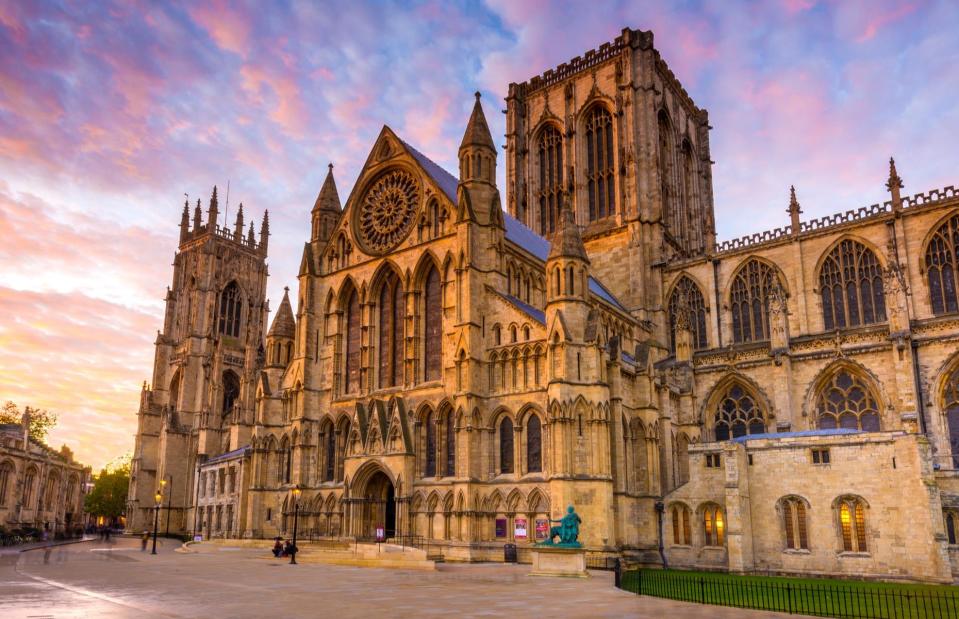
Janice Carlson/Shutterstock
Soaring above the twisting, ancient laneways of York, this grand Gothic structure is northern Europe’s largest medieval cathedral. York Minster is especially renowned for its remarkable windows, including the vast Great East Window which dates back to 1405 and is the world's largest example of medieval stained glass. A whopping 275 stone steps takes visitors to the top of the Minster’s mighty tower, which offers a remarkable birds-eye perspective of Yorkshire's walled city.
Kelvingrove Art Gallery and Museum, Glasgow, Scotland
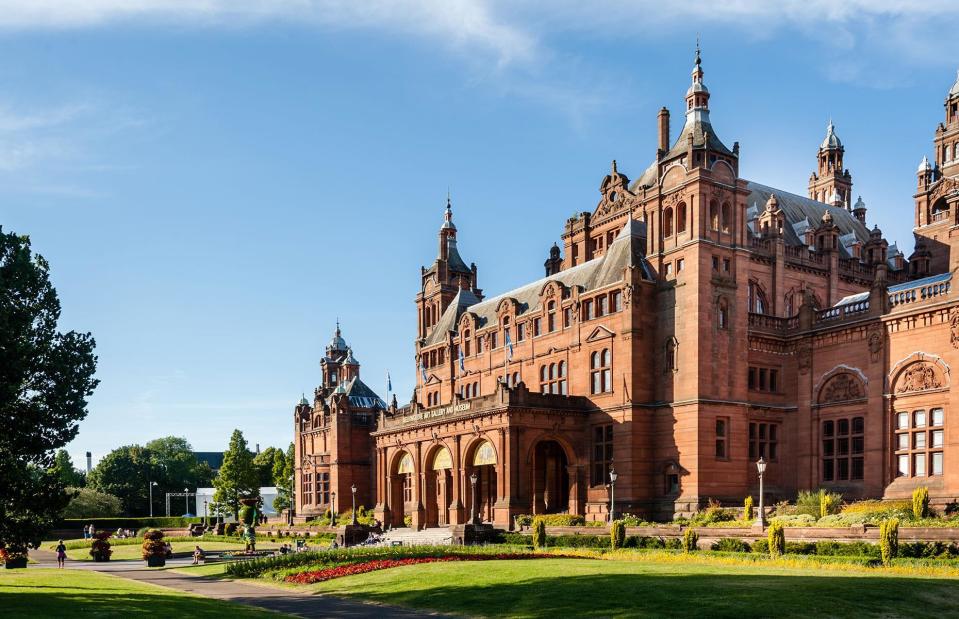
Cornfield/Shutterstock
Glasgow's Kelvingrove Art Gallery and Museum opened in 1901 and quickly became one of the most popular attractions in Scotland. Within its distinctly Spanish Baroque building, there are 22 galleries housing one of the finest art collections in Europe. Highlights of the museum’s permanent collection include Salvador Dalí’s Christ of St John of the Cross, alongside works by Vincent van Gogh and Rembrandt.
Tate Modern, London, England
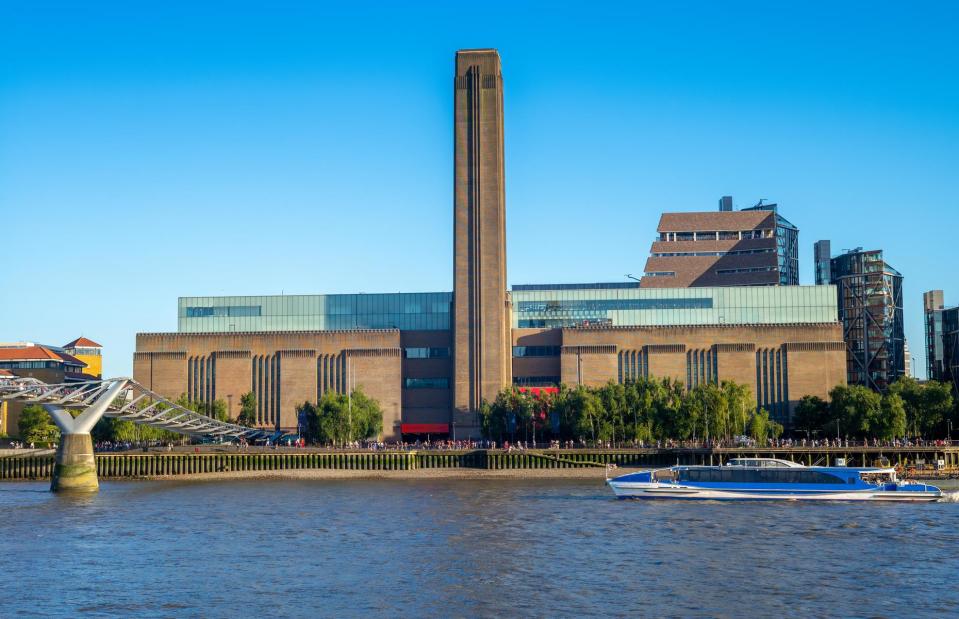
Richie Chan/Shutterstock
The former 1950s Bankside Power Station on a once-scruffy stretch of the Thames is now one of the most admired buildings in London and a world-class modern art gallery. The vast industrial space was put to impressive use by architects Jacques Herzog and Pierre de Meuron, who won a competition to design the new Tate Gallery in Giles Gilbert Scott’s original building. The Turbine Hall, a huge exhibition space that usually hosts large-scale sculptures and installations, is especially awe-inspiring.
Windermere, Cumbria, England
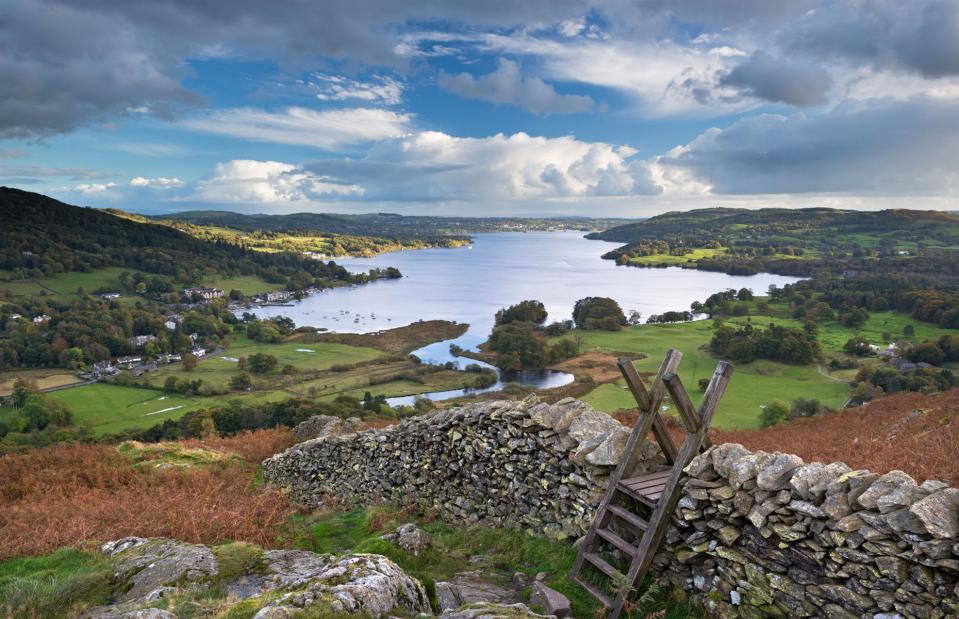
Adam Burton/Alamy Stock Photo
The rugged Lake District National Park in northwest England is dotted with dramatic beauty spots including craggy mountains, deep forests and, of course, shimmering lakes. At 10.5-miles long (17km), Windermere is England’s largest natural lake and its waters have inspired numerous poets and authors, including local lad William Wordsworth and Arthur Ransome of Swallows and Amazons fame.
Durham Cathedral, Durham, England
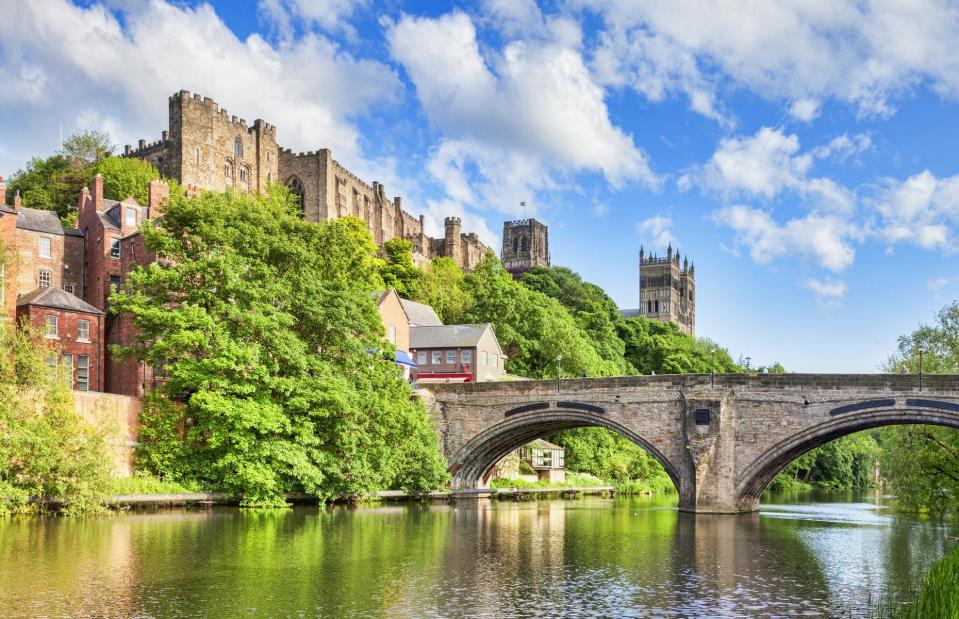
travellight/Shutterstock
This awe-inspiring Romanesque cathedral sits next to Durham Castle on a rocky outcrop above a loop in the River Wear and dominates the skyline of this charming medieval city. It’s of huge spiritual significance to Anglicans and is the resting place of two Anglo-Saxon religious figures: St Cuthbert and St Bede. Built in a Norman-style from the late 11th century, it is thought to be the only cathedral in England to retain almost all of its Norman craftsmanship.
Tyne Bridge, Newcastle and Gateshead, England
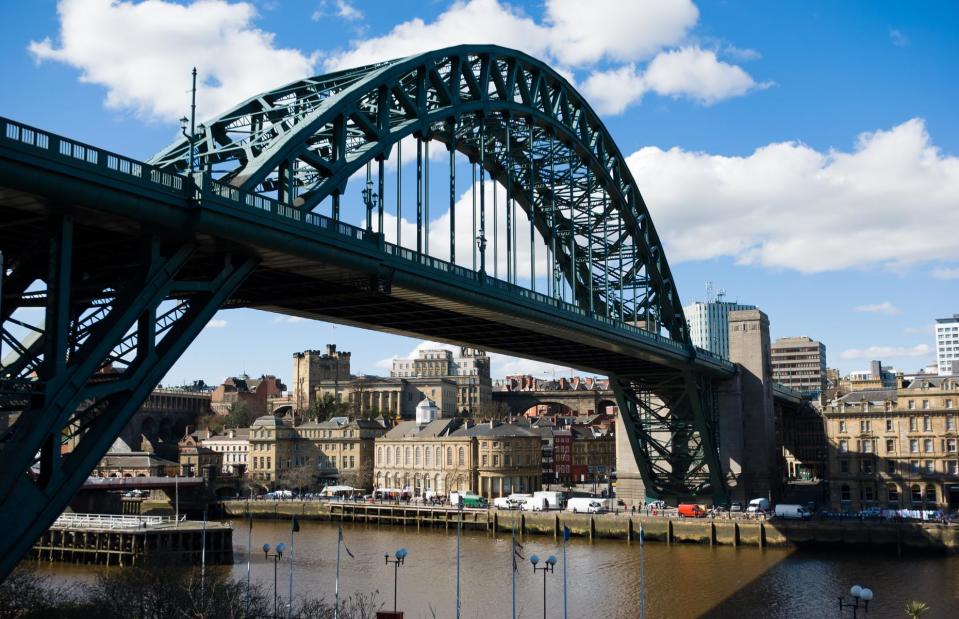
Shaun Dodds/Shutterstock
With its design based on the world-famous Sydney Harbour Bridge, the Tyne Bridge was unveiled on 10 October 1928 with King George V and Queen Mary in attendance. Hundreds of people lined the quay to watch the royal party cross the bridge in their horse-drawn carriage. Today, the magnificent steel and granite structure that links Newcastle and Gateshead is a symbol of Tyneside’s rich industrial past and one of the most celebrated landmarks of the Northeast.
The Major Oak, Nottinghamshire, England
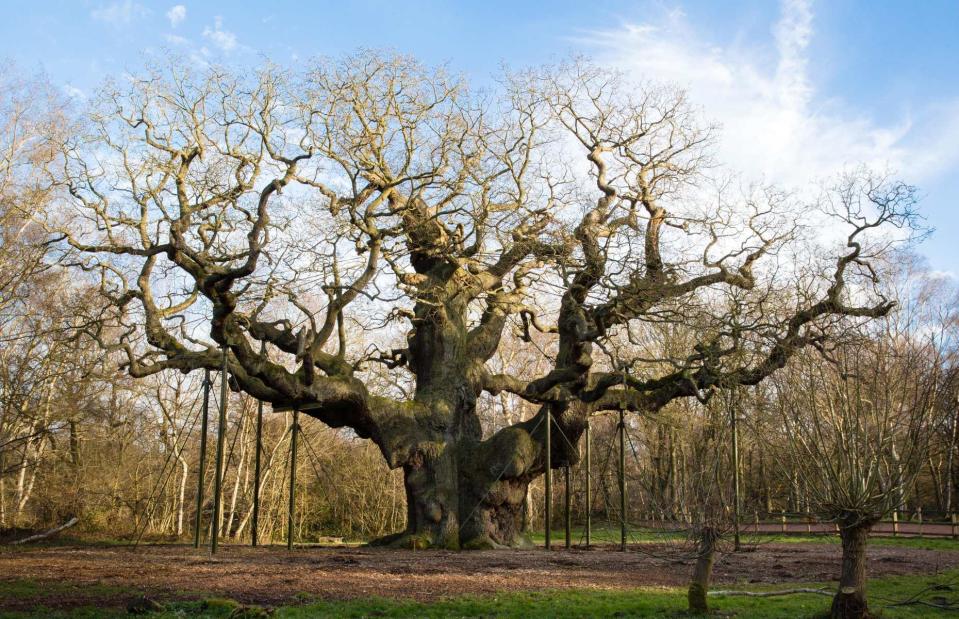
Steve Taylor ARPS/Alamy Stock Photo
The ancient hunting ground of Sherwood Forest is said to have been home to one of Britain’s favourite folklore heroes, Robin Hood. The woodland is smaller than it once was, but with more than 1,000 ancient oak trees, it's still a magnificent spot in Nottinghamshire. Probably the most famous resident of the enchanting forest is Major Oak – an enormous age-old tree that’s said to be where the famous outlaw and his merry men hid out.
Natural History Museum, London, England
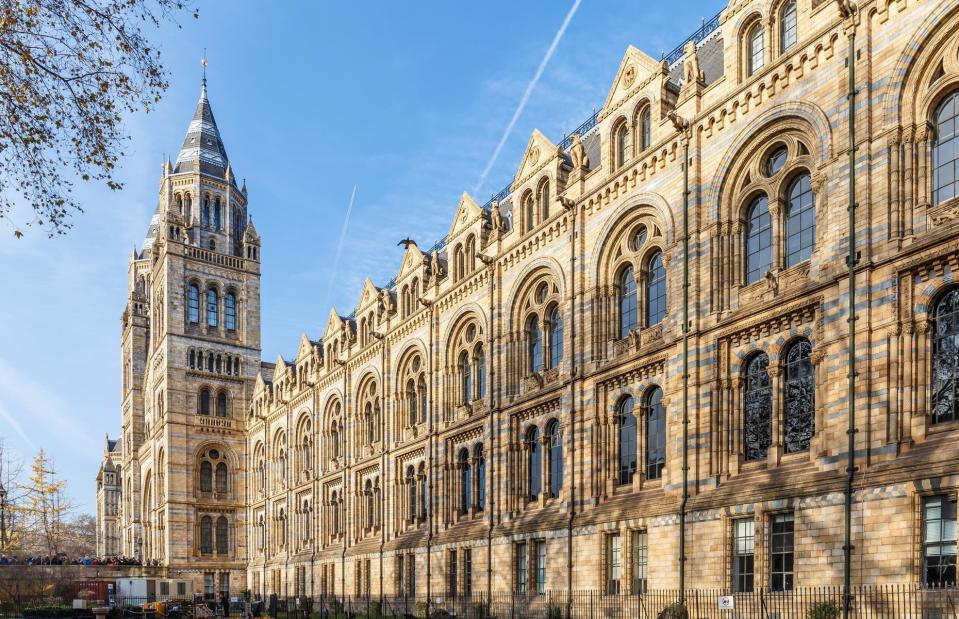
Alexey Fedorenko/Shutterstock
Originally a collection within the British Museum in Bloomsbury, it was only in the 1850s that the natural history department’s superintendent Richard Owen pushed for a bespoke space of its own. The result was this grand Romanesque building in South Kensington that took nearly eight years to build and opened in 1881 to great fanfare. Particularly admired is its stunning Hintze Hall, which houses the skeleton of a female blue whale.
Holy Island, Northumberland, England
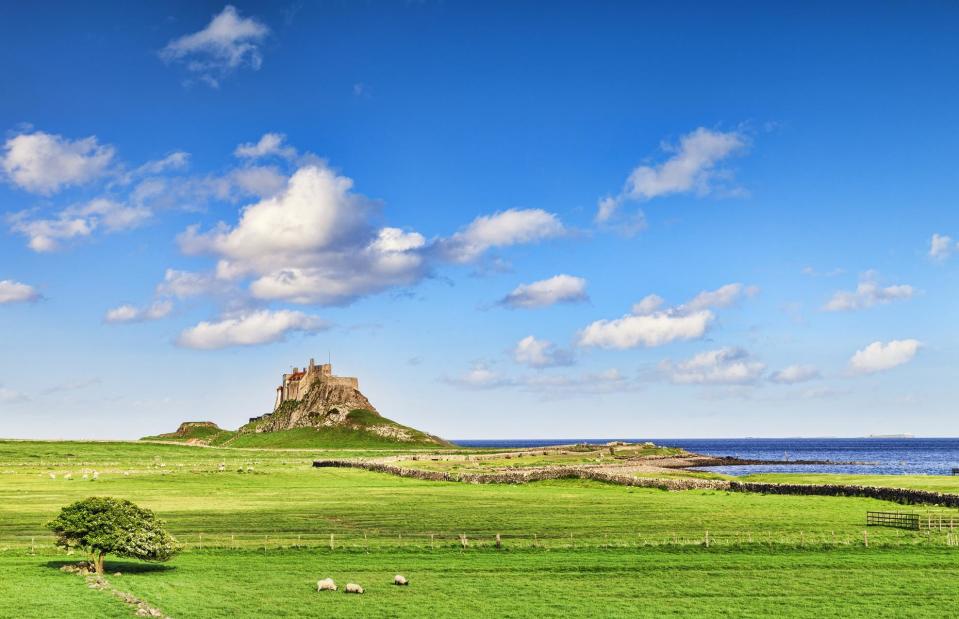
travellight/Shutterstock
This small tidal island off the Northumbrian coast is one of the earliest centres of English Christianity. It was first settled by Irish monks in AD 635 and was home to a monk named Cuthbert, who eventually became the most important saint in northern England in the Middle Ages. The island was also the birthplace of the Lindisfarne Gospels – one of the most remarkable examples of early medieval art. Abandoned after Viking raids in AD 793, the ruins there today are from a priory built in the 12th century when the monks returned.
Scott Monument, Edinburgh, Scotland
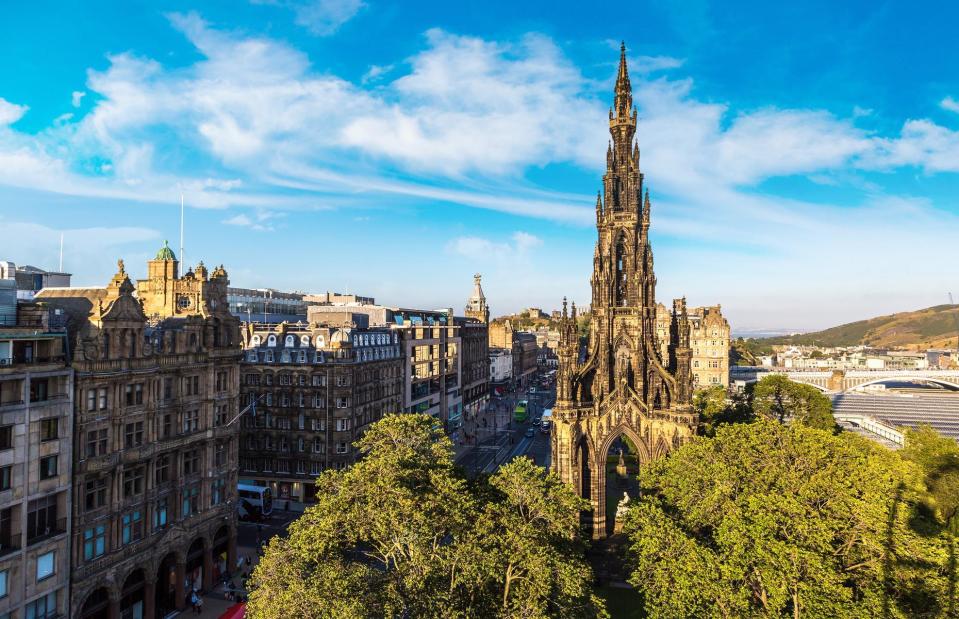
S-F/Shutterstock
Created to commemorate the Scottish author Sir Walter Scott, this soaring and intricate Victorian Gothic monument on Princes Street is one of Edinburgh’s best-known landmarks. Its narrow spiral steps lead to four separate viewing platforms offering breathtaking panoramas of the city. A marble statue of Sir Walter and his beloved hound Maida sits at the base.
Chatsworth House, Derbyshire, England
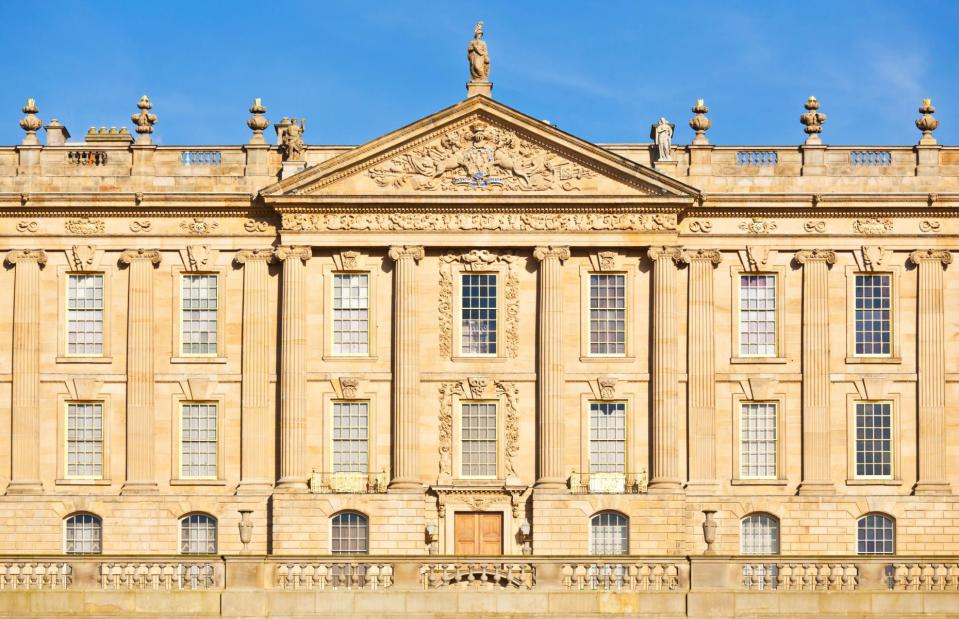
eye35.pix/Alamy Stock Photo
Britain is awash with stately homes but the stunning seat of the Duke and Duchess of Devonshire is a standout. Surrounded by vast parklands, the estate has been home to the Cavendish family since 1549. It was propelled to global fame as Pemberley in the 2005 film adaptation of Pride & Prejudice, starring Keira Knightley. Inside, the grand house is stuffed with antiques and one of the most important art collections in the country.
Roman Baths, Bath, England
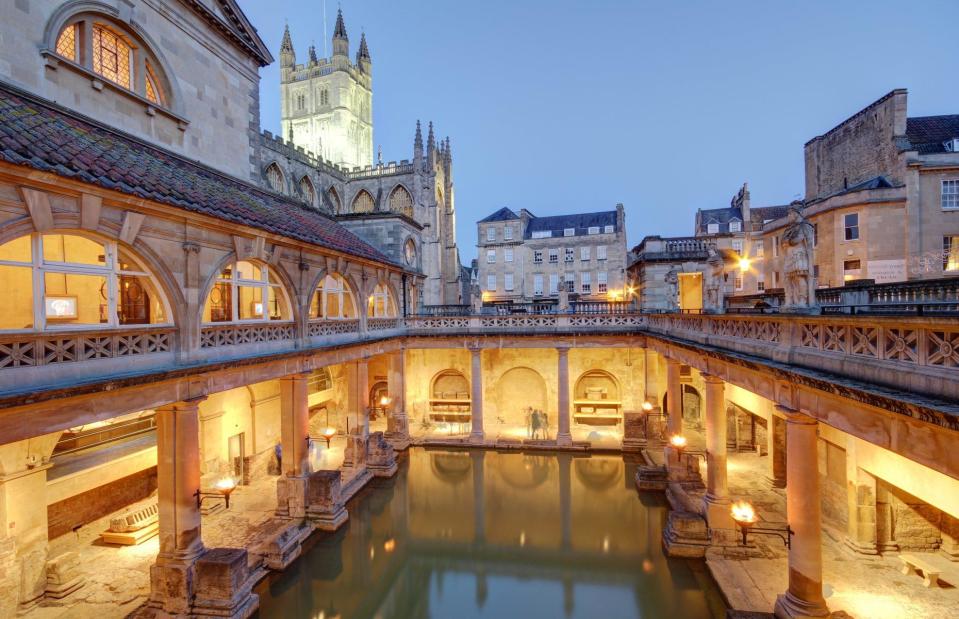
Ollie Taylor/Shutterstock
One of the most popular Roman sites in Britain, this ancient bathing complex is located in the centre of picturesque Bath, next to the beautiful medieval Bath Abbey. It was constructed around natural hot springs in the first century AD in a Roman settlement that was then known as Aquae Sulis, along with a temple dedicated to the goddess of the springs, Sulis Minerva. The magnificent Great Bath forms the centrepiece, but the ruins are extensive and the museum incredibly informative.
Clifton Suspension Bridge, Bristol, England
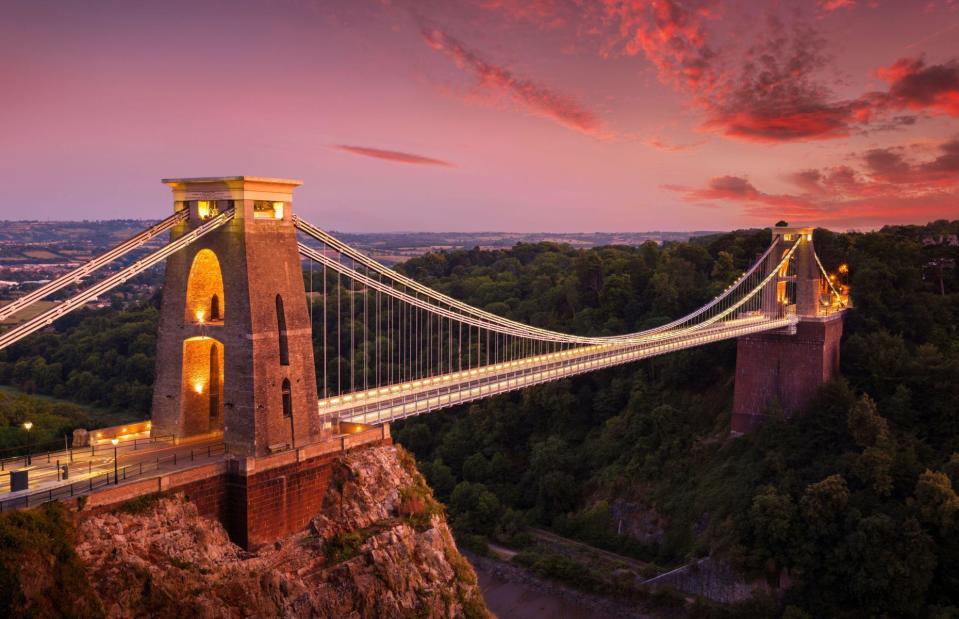
eye35.pix/Alamy Stock Photo
Stretching across the Avon Gorge and the River Avon in Bristol, this masterpiece of Victorian engineering was designed by Isambard Kingdom Brunel when he was just 24 years old. Construction began in 1831 and after several setbacks, the bridge finally opened in 1864. Despite being designed for horse and carts, it’s still in use, with thousands of vehicles typically crossing the bridge every day.
St Michael’s Mount, Cornwall, England
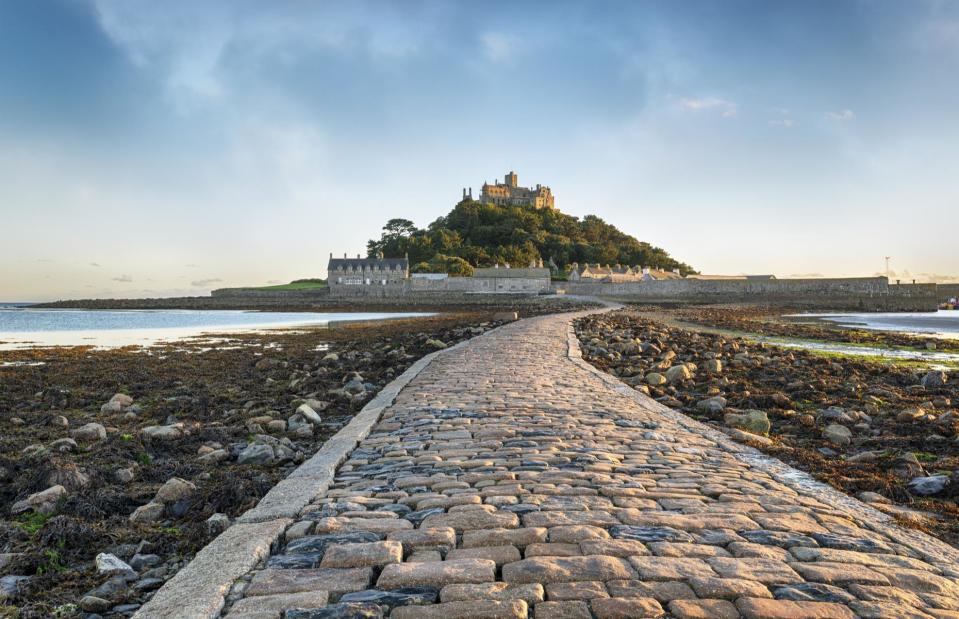
Helen Hotson/Shutterstock
A one-time medieval monastery and home to the St Aubyn family since the 17th century, this fairy-tale island fortress sits off Cornwall’s west coast. It can only be accessed at low tide across the granite causeway from Mount's Bay or by boat. With its gorgeous gardens, centuries-old castle and spectacular views from across the water from the battlements, it's a picturesque gem on the Cornish coastline.
London Eye, London, England
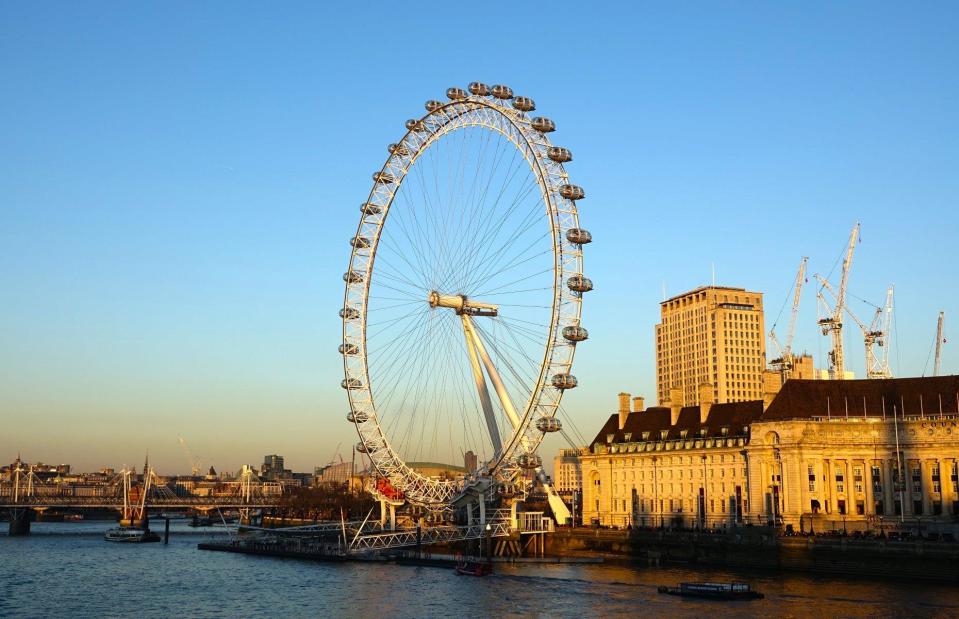
Gualberto Becerra/Shutterstock
The London Eye was a controversial addition to the English capital's skyline when it first opened on the South Bank in 1999, but today the city is unimaginable without this giant Ferris wheel twirling above the Thames. It has 32 capsules representing the city’s boroughs that can each hold up to 25 people as it loops around, offering up incredible 360° views of London's sprawl. The structure is now world-famous as the backdrop for the capital’s spectacular New Year’s Eve fireworks display.
Durdle Door, Dorset, England
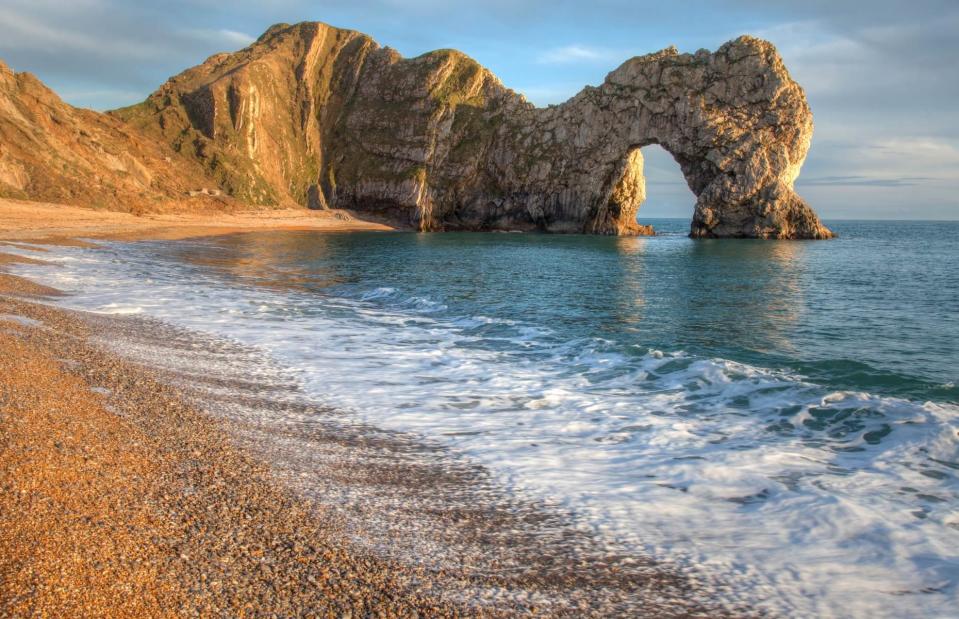
Gail Johnson/Shutterstock
One of England’s most incredible natural features, Durdle Door is part of the beautiful 95-mile (153km) Jurassic Coast World Heritage Site, where layers of sedimentary rock tell Earth’s history over 185 million years and the beaches are peppered with fossils. This much-photographed natural limestone arch is reached via a steep pathway and steps to the shingle and sand beach.


